
THE ANNUAL REPORT & DIRECTORY Page 22


THE ANNUAL REPORT & DIRECTORY Page 22

SHAPING THE FUTURE
OMERS’ new CPO explains her philosophy of service Page 6
VISION BENEFITS ARCHAIC Plans have not adapted to modern world Page 14
WHAT’S CHANGED? ETFs annual report and directory Page 30

Benefits and Pensions Monitor’s special reports provide an expert-collated resource for the industry when looking for best-in-class partners and the most revered service providers.
The special reports also provide an opportunity to honour the top companies and individuals in the industry for their hard work and commitment to innovation. In 2024, BPM will produce a comprehensive portfolio of special reports covering a plethora of topics and agendas that are top of mind for professionals and most pertinent to the industry.
• Elite Women
• Hot List
• Top Benefit Providers

• Top Consultants
• Top Employers
• Top Money Managers
If you would like further details on how to be involved, please get in touch via email at sophia.egho@keymedia.com.



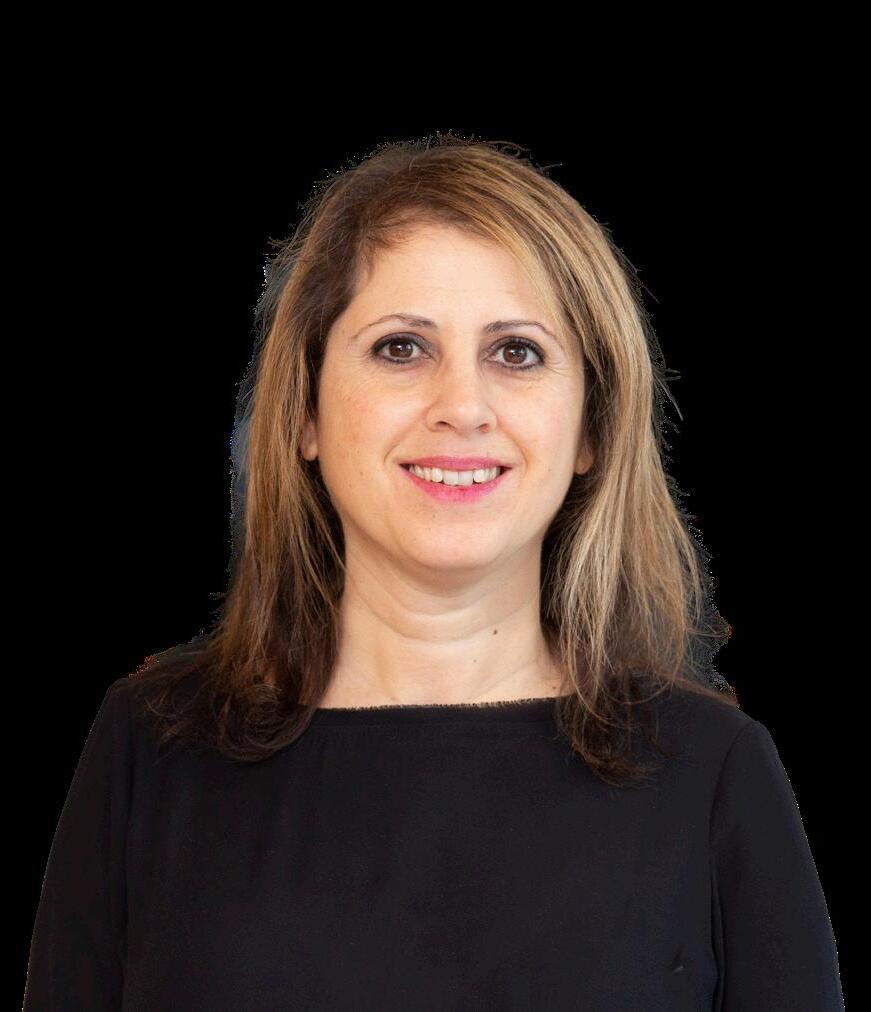

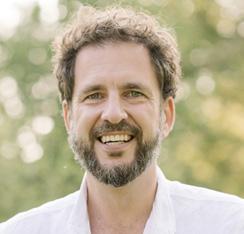
Canada’s public pension funds have a simple but hugely important mandate – to provide secure retirement income for Canadians. To this end, the “Maple 8” have been a stunning success and consistently rank high in global pension fund league tables. Arguably the biggest reason for this success is their independence from political interference and the freedom they have to make the best investment decisions to sustain their funds.
And yet, not everyone is happy. In an open letter to federal and provincial finance ministers in March, business leaders called for new rules and incentives to reverse a decline in domestic investments and address Canada’s productivity problem.
At the heart of the argument is how much the pension funds are in the pocket of government. John Ruffolo, founder and managing partner of Maverix Private Equity, and founder of OMERS Ventures, is quoted in betatkit.com as saying there is a clear separation of church and state, adding, “This is private capital. It doesn’t belong to government. [The pension funds are] not sovereign wealth funds and people confuse them as such.”
But in the letter, business leaders argue that it’s not so clear-cut. “Without government
“It’s like telling Usain Bolt to wear shoes only made in Jamaica, despite the best spikes being made elsewhere”
sponsorship and considerable tax assistance, pension funds would not exist,” it read. “Government has the right, responsibility, and obligation to regulate how this savings regime operates.”
These two opposing views pose the question of whether public pension funds really have underinvested in Canada. HOOPP’s portfolio holds about a 55 percent allocation to Canada, and pointedly explained that this is done because the assets are of high quality, not out of a sense of national duty. Last fall, the CPPIB pushed back on the idea it wasn’t supporting Canada by citing global context – that Canada represents about 2.5 percent of global capital market opportunities and that the fund typically allocates double digits.
Should these funds, which represent the future safety net for millions of hardworking Canadians, be used to fix problems in the Canadian economy? Should they sacrifice some diversification (a tenet of good investing) for the greater economic good? Such an intervention would inherently make the public pension funds a political football, which would surely distract from their core mandate.
Their independence is essential. Why punish them for their excellence? It’s like telling Usain Bolt to wear running shoes only made in Jamaica, despite the best spikes being made elsewhere. Let’s explore other ways to stimulate our economy rather than interfere with our flagship pension funds, which represent a modern-day Canadian success story.
James Burton, managing editor
EDITORIAL
Managing
Senior
Editor
Nienke Hinton
Senior Sponsored Content Writer Manal Ali
Lead Production Editor Roslyn Meredith
Production Editor Kel Pero
ART & PRODUCTION
Art Director Marla Morelos
Designers
Khaye Cortez, Noel Avendano
Production Coordinators
Kat Guzman, Loiza Razon
Customer Success Executive
Michelle Tamayo
Vice President, Production Monica Lalisan
SALES & MARKETING
Business Development Director Abhiram Prabhu
Business Development Manager Doris Holinaty
Account Manager
Michael Hughes
Webinar Producer Kristyn Dougall
CORPORATE
President Tim Duce
Director, People and Culture
Julia Bookallil
People and Culture Business Partner
Alisha Lomas-Oliver
Chief Revenue Officer
Dane Taylor
Chief Information Officer
Colin Chan
COO George Walmsley
CEO Mike Shipley
EDITORIAL ADVISORY BOARD
Celine Chiovitti, OMERS
Katie McNulty, CAAT Pension Plan
Greg Hurst, Greg Hurst & Associates
Robert Weston, Pharos Platform
Kevin Minas, Mawer Investment Management
Mark Newton, Newton HR Law
Jim Helik, James Helik Consulting
Tim Clarke, tc Health Consulting
EDITORIAL INQUIRIES
james.burton@keymedia.com
SUBSCRIPTION INQUIRIES tel: 416 644 8740 • fax: 416 203 8940 subscriptions@kmimedia.ca
ADVERTISING INQUIRIES
Michael Hughes michael.hughes@keymedia.com
Doris Holinaty doris.holinaty@keymedia.com tel: 416 644 8740
416 644 8740 www.keymedia.com
Benefits & Pensions Monitor is part of an international family of B2B publications, websites and events for the
8740



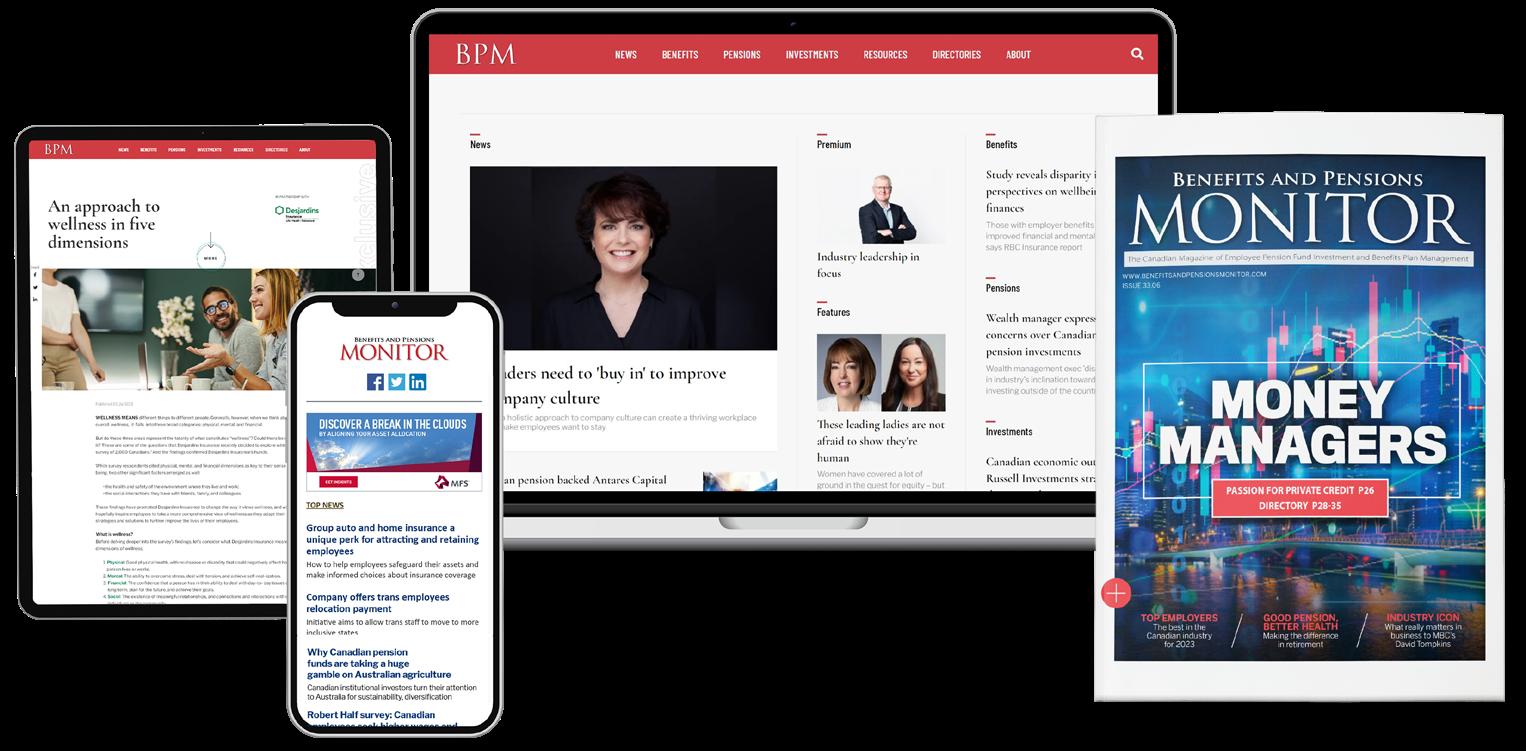
Stats Canada reports lower after-tax income and rising poverty in 2022 due to inflation and cuts in government aid. The annual rate for 2022 stood at 6.8 percent, and with the full phase-out of pandemic-related benefits by mid-2022 and the reinstatement of pre-pandemic EI eligibility requirements, the median government transfer decreased by 28.9 percent to $10,100.
3.4%
decrease (adjusted for inflation) in the median after-tax income for Canadian families and unattached individuals, dropping from $73,000 to $70,500
9.9%
10.3%
Statcan released statistics that reveal the distribution of Canada’s public service employees by designated group and occupational category as of March 31, 2022

A new study by AgeCalculator.com reveals which countries have
but where is Canada?

The Specsavers Canadian Eye Exam Survey, conducted by Leger, gave a worrying insight into the behaviour of Canadians and their eye health habits.
A survey has revealed nearly half (42%) of Canadian companies have noticed an uptick in requests for improved benefits over the past year, largely due to the increased cost of living.
of those with vision benefits say they do not plan to use available coverage
of Canadians who do not wear glasses have not had an eye exam in more than 10 years of vision loss is preventable and treatable if caught early
OMERS’ new CPO Celine Chiovitti explains her philosophy of service and the issues ahead for DB pension plans and retirement
CELINE CHIOVITTI believes that pensions are a form of social infrastructure. The chief pension officer (CPO) at OMERS began her career working in public service, first for the city of Etobicoke and then the city of Toronto. She worked in public-facing roles and viewed her work as service to the public. A child of immigrants who never had pensions themselves, she saw in her own public service pension plan the idea that people can accomplish so much more working together than they can on their own. That philosophy carried her into a career at OMERS and her new role as CPO.
Chiovitti now sees pensions at an inflection point. Canada is “greying” rapidly as its population ages. The cost-of-living crisis has made all Canadians more concerned about their day to day and less able to focus on the long-term. Defined benefit pension plans like OMERS are far less common and widespread than they once were. Retirement seems to be slipping out of reach for many, and we risk consigning our elders to poverty in their golden years. Chiovitti is convinced that pensions can stand against these demographic and economic tides.
“Defined benefit pensions give the average individual access to professional management and the knowledge that when they’re ready to retire they have access to something that will be payable for their life. They’re not ever going
to outlive their savings,” Chiovitti says. “It’s not about getting rich; it’s about having access to a decent standard of living.”
Chiovitti has three core goals as CPO of OMERS, which she thinks can help address some of the acute issues facing her 600,000 members as well as Canadians as a whole. The first is to advocate for pension plans, raising their profile and underscoring the intrinsic value of pensions. The second is to reconsider
aging parents may be forced to bear unforeseen financial burdens as their parents’ own savings fail to last.
Chiovitti believes that pension plans can play a role in preventing these outcomes. While defined benefit pension plans are the “gold standard,” she says that any push for employer-sponsored pension plans is a positive one. Advocating for pensions also means talking about how retirement should and can
“We’re fortunate to be in a society and in a generation where we’re thinking about diversity”
retirement, opening conversations about what retirement should look like as Canadians live longer. Her final goal is to highlight the additional positive social value that the delivery of pensions provides.
Advocating for pensions in Canada is not work that Chiovitti can do alone. She believes it will take a multi-stakeholder approach for Canadians to recognize how pensions can help alleviate the looming crises we now face. In an aging society, with more individuals aged over 65 than under 14, the stresses caused by mass retirement and extended longevity will become more and more apparent. Children of
look. The current pension model was built at a time when retirement might last 10 to 15 years before a member died. Chiovitti says that OMERS’ oldest living member is 108 and has collected a pension for over 40 years. While an extreme example, the fact of increasing longevity means the traditional retirement model needs to be reconsidered.
For Chiovitti that means preparing her members for their retirement, both financially and conceptually. Canadians at retirement age may not want to end their working lives entirely. They may want a new chapter instead, one that could involve a slowdown in work or
a career change. That means they continue to contribute to the economy and save for their futures, while pursuing other forms of fulfillment or the dreams they always had.
Reimagining how we think about retirement, and creating opportunities for older workers to thrive, are among the many positive social impacts Chiovitti wants to achieve in her role as CPO. On a fundamental level, she sees pension plans like OMERS as providing a level of social infrastructure that contributes positively to the economy while maintaining the quality of life of their members. But that’s not all. As a pension plan, OMERS invests in ways that incorporate long-term thinking and has committed to a climate action plan, an area that is of growing interest to plan members, including millennials and Gen Z members.
Chiovitti’s own appointment as CPO represents a step toward that social progress. As a woman in a major leadership role, she has already contributed a perspective that has helped her members. In OECD countries, women earn about 26 percent less pension income than their male counterparts, due in part to salary discrepancies and leaves. Chiovitti has already begun work at OMERS to make it easier to purchase leaves, with a focus on pregnancy/parental leaves that predominantly involve women. This change will support them in more easily buying back any future pension income they lost by taking a leave. She says that work points to the importance of diversity in this industry. By elevating leaders of different backgrounds, with lived experience of different needs, the needs of the whole membership can be better addressed.
The goals Chiovitti has set are significant. They mean addressing some of the crucial crises of our age. Yet Chiovitti seems ready to tackle these topics, to do that with a smile, and to maintain a philosophy of service throughout the hard work now before her.
“I hope that people start to look at the good we can do collectively. I believe that together we are so much stronger than we are
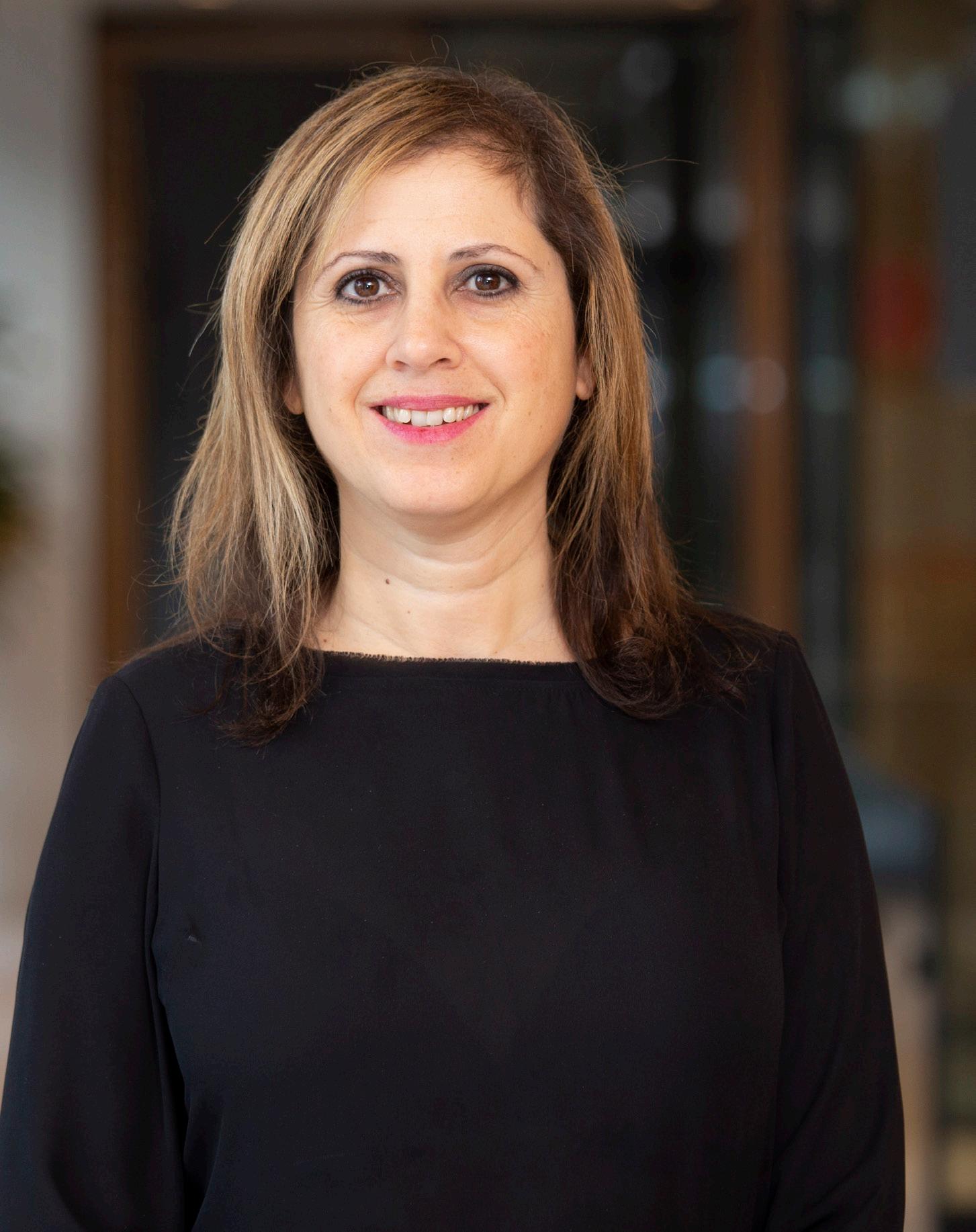
individually,” Chiovitti says. “I’ve never been more excited to be where we are than today. The world is shifting, and part of that is scary – there’s so much uncertainty. But I feel like we are at a pivotal time when we can come together and make this world a better place. I know that sounds a bit corny, but truly I believe that.
FAST FACTS
Title: Chief pension officer
Year joined: 2013
Number of members: 600,000
Previous experience: Division head at City of Toronto
“I will never be comfortable with the fact that people are just going to be left on their own. I will never be comfortable seeing elder poverty. I don’t think Canada can live with that. So I think we have the ability to shape a future that is more equitable, more accessible, and has more financial resilience in it. But we need to come together and do it together.”
Loneliness and social isolation are negatively affecting health and workplace productivity, says expert

CANADIAN WORKERS under 40 are increasingly feeling isolated and lonely compared to their older colleagues, according to the latest TELUS Mental Health Index. In fact, the index shows the mental health of workers has declined to levels in line with lows during the pandemic.
Nearly half (45 percent) of workers say they do not have relationships with people they trust at work, while younger workers are more
likely to lack trusted relationships altogether. The lack of trusted relationships is a factor in loneliness, which can lead to lower mental health scores and poorer physical health.
It’s a global phenomenon, as the World Health Organization (WHO) has declared loneliness to be a pressing global threat. Moreover, the effects of isolation and loneliness are now recognized and compared to well-known health risks such as smoking,
obesity, and lack of physical activity.
“The index findings reflect a concerning reality, in particular for our younger workers,” says Paula Allen, global leader and vice president of research and insights, TELUS Health. “This also affects businesses, as loneliness and social isolation negatively influence both health and workplace productivity. Rapid societal changes, alongside diminishing social support, are taking their toll.

“When we don’t have that sense of connection, when we don’t have social support, when we don’t have that feeling of belonging – all of which are connected to feeling isolated – we respond with a fear reaction”
Paula Allen, TELUS Health
“Additionally, there are challenges like inflation, housing affordability, and job loss risks that are clear stressors, especially at the start of a person’s career when there is typically less financial stability. Organizations can help by focusing on building a culture of trust, which counters isolation, and highlighting their health, personal, and financial programs, which offer crucial support.”
Not surprisingly, she says that efforts to combat the negative impacts of isolation and loneliness on employee health and productivity not only improve well-being but also have financial benefits for employers.
Currently, however, the index finds that 15 percent of employees rate their company’s culture around mental health as negative. On top of that,10 percent of workers do not feel valued and respected by their colleagues.
Employers need to be aware that 33 percent of workers in Canada are at high risk of mental health issues, 45 percent have moderate mental health risk, and 22 percent are at low risk. It is an issue that needs to be addressed.
“When we don’t have that sense of connection with others, when we don’t have social support, when we don’t have that feeling
of belonging – all of which are connected to feeling isolated – we respond with a fear reaction,” says Allen. “And if we can’t let go of that fear, if it’s chronic and we carry it with us for a long period of time, it makes us a lot more sensitive to stress and less able to be resilient in the face of changes in life. It also wears down our physical health.
“There’s a lot of discussion around whether the return to the office will solve this mental health crisis. The data doesn’t tell me whether that is the case, but the data I do see says when you have trusted relationships at work, that makes a difference in whether you feel that sense of isolation. Forty-five percent of Canadian workers don’t feel that sense of trust regardless of where they work.”
Allen says employers need to start by assessing their culture, looking at what they offer in terms of mental health support, and determining how well these benefits and policies are integrated into the culture.
As far as choosing what initiatives are the best ones to implement, Allen says employers need to make sure that the benefits match the needs. “That’s part of the reason why we do the Mental Health Index,” she says. “We do research to make sure that we’re keeping on top of what the needs of the population are and what current opportunities are available to meet those needs for continuous
improvement. But we also provide assistance for organizations, to help them understand what they can do.”
Communication
Communicating mental health support, programs, and culture is vital for these initiatives to be effective because almost a quarter (21 per cent) of workers in Canada do not know whether or not their employer provides mental health benefits. As well, only a third of Canadian workers know what an employee assistance program (EAP) is, and what it does.
“Many [organizations] have great benefits,” says Allen. “They have processes in place that are supportive, and they have the infrastructure, but their employees have no idea. If the employees don’t know about it, then it does not exist.”
There are a number of opportunities on the sideline, says BMO ETFs portfolio manager Matt Montemurro

WITH INTEREST rates around five percent of the overnight rate, cash has become an asset class for many investors, and that shift made high-interest savings account (HISA) ETFs a white-hot choice in 2022 and 2023. Providing a full picture of their investment profile by holding investments and cash all in one place and paying a premium yield relative to any alternative, the combination vehicle was a win-win. But there’s been a fundamental change in the market, warns BMO’s Matt Montemurro, that requires investors to reconsider their decision.
“The product was very successful for
investors looking to maximize the yield in cash from their savings,” says Montemurro, head of fixed income and equity index ETFs, exchange traded funds at BMO Global Asset Management Inc. “Now there’s been a regulatory change that has structurally altered that benefit on a go-forward basis – but there are opportunities in other products for investors to make up what they’ve lost.”
in
Massive amounts of assets went into HISA ETFs in Canada as the vehicle’s popularity rose with the interest rates beginning in
2020, with the majority coming in over the last two years. By the end of 2023, HISA ETFs held around $30 billion in assets. 1 Traditionally a vehicle to incentivize individuals to save and deposit cash, where it was used by the banks as capital, it was “no longer John and Jane and their savings,” Montemurro notes, but fund managers, investment advisors, and pension plans.
When the Office of the Superintendent of Financial Institutions (OSFI) stepped in to review the product, the regulator found that the ability to take that money out on demand posed a significant risk to the financial system. In response, OSFI ruled that banks can no longer use assets in HISAs and deem them deposits; they must be considered wholesale funding. The 100 percent liquidity requirement, which came into force on January 31, is intended to support all HISA ETF balances that can be withdrawn within 30 days, and in its wake, preferential institutional yields have fallen.2
“If the banks can no longer lend [the money] out, it becomes much less attractive capital,” Montemurro says, adding that yields have come down 40 basis points, they’re expected to continue to fall, and he predicts the long-term trend may see yields sit at around a 25-basis point discount of the overnight rate.3 Effectively, the underlying nature of the ETFs themselves have been changed and investors are looking for other options.
“Those who were doing it for the yield need to rethink the risk they’re taking and their
overall exposure, because there may be better options out there. You can make the trade to another product in the market that allow you to bridge some of that gap.”
Montemurro sees two main solutions in which investors can earn more on their cash, with a few key differences. First is BMO’s ZMMK, a money market ETF that invests in ultra shortterm fixed-income securities. Traditionally what institutional asset managers turned to for cash allocations, Canadian and provincial T-bills and short-term bonds make this option a safe investment route, Montemurro says. As it stands now, the money market funds offer a 25- to 30-basis point premium over the yield of a HISA.4
“Prior to OSFI’s decision, investors were getting less, so I can see why they chose one over the other – but now, for a similar risk profile, you have very little interest rate sensitivity,” Montemurro says. “If this is a yield trade, investors should consider all their options to make sure they are maximizing the opportunity.”
Second, for investors who want to take advantage of some of the opportunities in the fixed income market while also getting paid a greater yield, Montemurro recommends looking at BMO’s ZST. The product provides investors with exposure to ultra short-term fixed-income securities – mainly corporate bonds but potentially some Canadian T-bills as well – all under one year to maturity. The significant amount of exposure to Canadian banks provides a stable return stream, paying a premium between 30 to 40 basis points compared to the HISA products.4 It’s a highquality portfolio, Montemurro says, and again, “for that yield-hungry investor, potentially taking a bit more risk can really make up what was lost following the OSFI decision.” Investors should seek professional advice with respect to any circumstance.
While nobody knows exactly when or by how much, the current consensus is that the hiking cycle is done, and rates look to be coming down in the near future. If rates do come down – say by 50 basis points, for
example – a HISA’s yield would drop by that same amount. But in something like a ZST, buying bonds means that duration impact adds positive performance. A 50 percent drop in rates, with a duration of half a year in the portfolio, equals a 25-basis point pop in the price of the bonds and, subsequently, the price of the ETF.
“When rates come down and prices go up, we’re able to take advantage of some of that, and the net asset value (NAV) of the ETF will increase,” Montemurro says. “Duration can be helpful, and something like ZST not only secures a yield premium, but also gets you some extra upside appreciation.”
Another added benefit of using something like ZST is that there’s a structural advantage in the bond market relative to the HISA products, providing greater tax efficiency in the current market environment. Because rates went up so quickly in 2022, bond prices went down, which means they’re trading at a discount to par: buying bonds with less than one year to maturity and holding them through to maturity means investors are getting a price appreciation. Taxable investors can take advantage of this because capital gains are taxed in a preferential way to income. Please speak to a tax specialist with respect to any specific circumstance.
ZMMK and ZST are compelling solutions in the new landscape, Montemurro says. While HISA ETFs were a great trade historically –especially over the last 2.5 years – the market has shifted. Ultimately, if investors are looking to maximize yield, “there are more attractive options on the sidelines.”
Sources:
1. TD Securities as of October 31, 2023. 2. https://www.osfi-bsif.gc.ca/en/news/osfi-upholds-100-liquidityrequirement-hisa-etfs-promote-financial-resilience
3. TD Securities Report as of October 31, 2023, spoke of similar trends.
4. BMO Global Asset Management as of March 31, 2024.
BMO Global Asset Management. Since inception dates are 11/29/21 and 01/29/11, respectively for ZMMK and ZST. Performance as of 03/29/24. Annualized Performance 1 Year 3 Year 5 Year 10 Year Since Inception
N/A
Sponsored by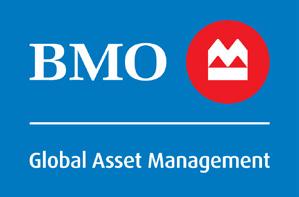
Disclaimer:
ThisarticleissponsoredbyBMOETFs.
Thismaterialisforinformationpurposes.Theinformationcontainedhereinisnot,andshouldnotbe construedas,investment,taxorlegaladvicetoanyparty.Particularinvestmentsand/ortradingstrategies shouldbeevaluatedrelativetotheindividual’sinvestmentobjectivesandprofessionaladviceshouldbe obtainedwithrespecttoanycircumstance.
TheviewpointsexpressedbythePortfolioManagerrepresentstheirassessmentofthemarketsatthetime ofpublication.Thoseviewsaresubjecttochangewithoutnoticeatanytime.Theinformationprovidedherein doesnotconstituteasolicitationofanoffertobuy,oranoffertosellsecuritiesnorshouldtheinformationbe relieduponasinvestmentadvice.Pastperformanceisnoguaranteeoffutureresults.Thiscommunicationis intendedforinformationalpurposesonly.
Allinvestmentsinvolverisk.ThevalueofanETFcangodownaswellasupandyoucouldlosemoney.The riskofanETFisratedbasedonthevolatilityoftheETF’sreturnsusingthestandardizedriskclassification methodologymandatedbytheCanadianSecuritiesAdministrators.Historicalvolatilitydoesn’ttellyouhow volatileanETFwillbeinthefuture.AnETFwithariskratingof“low”canstilllosemoney.Formoreinformation abouttheriskratingandspecificrisksthatcanaffectanETF’sreturns,seetheBMOETFs’prospectus. Commissions,managementfeesandexpensesallmaybeassociatedwithinvestmentsinexchangetraded funds.PleasereadtheETFFactsorprospectusoftheBMOETFsbeforeinvesting.Theindicatedratesofreturn arethehistoricalannualcompoundedtotalreturnsincludingchangesinunitvalueandreinvestmentofall dividendsordistributionsanddonottakeintoaccountsales,redemption,distributionoroptionalcharges orincometaxespayablebyanyunitholderthatwouldhavereducedreturns.Exchangetradedfundsarenot guaranteed,theirvalueschangefrequently,andpastperformancemaynotberepeated.
ForasummaryoftherisksofaninvestmentintheBMOETFs,pleaseseethespecificriskssetoutintheBMO ETF’sprospectus.BMOETFstradelikestocks,fluctuateinmarketvalueandmaytradeatadiscounttotheirnet assetvalue,whichmayincreasetheriskofloss.Distributionsarenotguaranteedandaresubjecttochange and/orelimination.BMOETFsaremanagedbyBMOAssetManagementInc.,whichisaninvestmentfund managerandaportfoliomanager,andaseparatelegalentityfromBankofMontreal.
Distributionyieldsarecalculatedbyusingthemostrecentregulardistribution,orexpecteddistribution, (whichmaybebasedonincome,dividends,returnofcapital,andoptionpremiums,asapplicable)and excludingadditionalyearenddistributions,andspecialreinvesteddistributionsannualizedforfrequency, dividedbycurrentnetassetvalue(NAV).Theyieldcalculationdoesnotincludereinvesteddistributions. Distributionsarenotguaranteed,mayfluctuateandaresubjecttochangeand/orelimination. Distributionratesmaychangewithoutnotice(upordown)dependingonmarketconditionsandNAV fluctuations.ThepaymentofdistributionsshouldnotbeconfusedwiththeBMOETF’sperformance,rateof returnoryield.IfdistributionspaidbyaBMOETFaregreaterthantheperformanceoftheinvestmentfund, youroriginalinvestmentwillshrink.DistributionspaidasaresultofcapitalgainsrealizedbyaBMOETF,and incomeanddividendsearnedbyaBMOETF,aretaxableinyourhandsintheyeartheyarepaid.Youradjusted costbasewillbereducedbytheamountofanyreturnsofcapital.Ifyouradjustedcostbasegoes belowzero,youwillhavetopaycapitalgainstaxontheamountbelowzero.
Cashdistributions,ifany,onunitsofaBMOETF(otherthanaccumulatingunitsorunitssubjecttoa distributionreinvestmentplan)areexpectedtobepaidprimarilyoutofdividendsordistributions,and otherincomeorgains,receivedbytheBMOETFlesstheexpensesoftheBMOETF,butmayalsoconsistof non-taxableamountsincludingreturnsofcapital,whichmaybepaidinthemanager’ssolediscretion.Tothe extentthattheexpensesofaBMOETFexceedtheincomegeneratedbysuchBMOETFinanygivenmonth, quarter,oryear,asthecasemaybe,itisnotexpectedthatamonthly,quarterly,orannualdistributionwill bepaid.Distributions,ifany,inrespectoftheaccumulatingunitsofBMOShortCorporateBondIndexETF, BMOShortFederalBondIndexETF,BMOShortProvincialBondIndexETF,BMOUltraShort-TermBondETFand BMOUltraShort-TermUSBondETFwillbeautomaticallyreinvestedinadditionalaccumulatingunitsofthe applicableBMOETF.Followingeachdistribution,thenumberofaccumulatingunitsoftheapplicableBMOETF willbeimmediatelyconsolidatedsothatthenumberofoutstandingaccumulatingunitsoftheapplicable BMOETFwillbethesameasthenumberofoutstandingaccumulatingunitsbeforethedistribution.Nonresidentunitholdersmayhavethenumberofsecuritiesreducedduetowithholdingtax.CertainBMOETFs haveadoptedadistributionreinvestmentplan,whichprovidesthataunitholdermayelecttoautomatically reinvestallcashdistributionspaidonunitsheldbythatunitholderinadditionalunitsoftheapplicable BMOETFinaccordancewiththetermsofthedistributionreinvestmentplan.Forfurtherinformation,seethe distributionpolicyintheBMOETFs’prospectus.
Anystatementthatnecessarilydependsonfutureeventsmaybeaforward-lookingstatement.Forwardlookingstatementsarenotguaranteesofperformance.Theyinvolverisks,uncertaintiesandassumptions. Althoughsuchstatementsarebasedonassumptionsthatarebelievedtobereasonable,therecanbeno assurancethatactualresultswillnotdiffermateriallyfromexpectations.Investorsarecautionednottorely undulyonanyforward-lookingstatements.Inconnectionwithanyforward-lookingstatements,investors shouldcarefullyconsidertheareasofriskdescribedinthemostrecentprospectus.
BMOGlobalAssetManagementisabrandnameunderwhichBMOAssetManagementInc.andBMO InvestmentsInc.operate.Certainoftheproductsandservicesofferedunderthebrandname,BMOGlobal AssetManagement,aredesignedspecificallyforvariouscategoriesofinvestorsinCanadaandmaynotbe availabletoallinvestors.ProductsandservicesareonlyofferedtoinvestorsinCanadainaccordancewith applicablelawsandregulatoryrequirements.
®/™Registeredtrademarks/trademarkofBankofMontreal,usedunderlicence.
BGO’S ROOTS in Canada run deep, and with one of the largest dedicated commercial real estate teams in the country, the firm has stood the test of time through economic cycles over the past century. The diversified firm, now with an expanded presence in the US, Europe, and Asia, still sees Canada through fresh and optimistic eyes.
Simon Holmes, managing partner and portfolio manager for BGO’s flagship core strategy in Canada, sat down with BPM to share his firm’s view of Canada and why this inflection point in the market has him bullish about current investment opportunities.
BGO views Canada as a market of significant importance to their global business. What’s driving the firm’s belief in the Canadian market today regarding commercial real estate?
Simon Holmes : Canada has historically offered a few key elements: geopolitical stability, the resilience of its capital markets, and strong property fundamentals across major metropolitan areas. Canadian real estate has been defined by disciplined long-term ownership across most sectors, with low leverage.
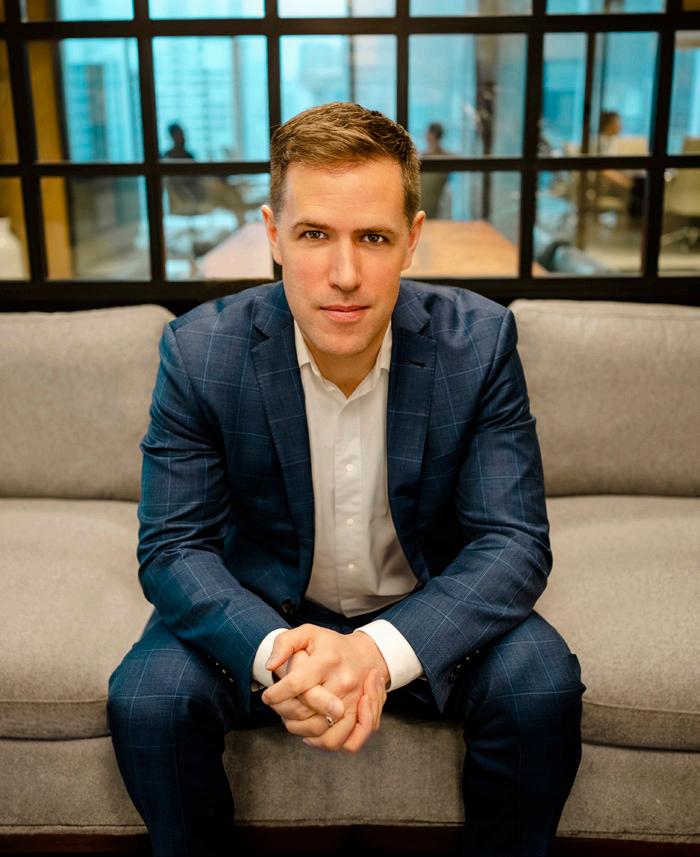
At the asset level, most major Canadian markets remain relatively strong. Vacancy is at or near historic lows across most property types. That’s very different from the dynamics in other developed markets. Today, in addition to that stability and those three factors, major markets in Canada offer very compelling growth dynamics. Major Canadian markets combine the population growth profile of US Sunbelt markets with the real estate
supply constraints common to US coastal markets, which creates conditions for strong long-term rent growth.
We’re starting to see this story gaining global recognition. We’ve seen international investors make some significant investments in the Canadian market in a way they hadn’t in years past. In 2023, foreign investors comprised 13 percent of all investment transactions, which is well above the annual average of approximately three percent.
What are some of the myths around the Canadian market that maybe need to be debunked?
SH: A few myths come to mind. The first is that because of its stability, Canada is a low-return market. What we’ve observed is the opposite: Given the prospects and dynamic of the past few years, we expect significant income growth and compelling returns.
Number two: there’s been a myth, at least up until recently, that Canada was a closely held market with owners who that rarely sell, and so there are limited transaction opportunities. That’s been decisively proven false.
A third myth worth mentioning is specific to the office sector, but not necessarily specific
to Canada. We see a bifurcation in office. The most modern, best-in-class, “trophy” office buildings continue to be resilient. It’s in the more challenged, older “B/C” class buildings that we’re seeing the weakness in the market.
How do you find opportunities in the market? What factors within the market or the wider economy do you look at, and why should investors be looking at those factors as well?
SH: The experience since interest rates have increased has reminded us of how dependent the entire industry is on macroeconomic factors. Over the past few decades, real estate benefited from steady declines in interest rates. This changed abruptly in 2022, which surprised some and resulted in price declines. However, property occupancy and income remain stable.
There is a disconnect in Canada, where we have strong fundamentals, but capital market dislocation is driving prices down. But now, in spring 2024, we’re relatively confident that we’re at or near bottom from a pricing perspective. We have conviction regarding the outlook for both property fundamentals and investment returns.
Given that dynamic, high-quality core assets in Canada are available today at compelling prices. Going-in yields are higher, and high-quality modern properties are trading below replacement cost. That’s a dynamic that has not existed in a very long time. We view this as a fantastic opportunity to buy highquality core assets.
As you’re leader of BGO’s Core Strategy in Canada, what asset classes are you paying special attention to?
SH: A few years ago, we would have had a very clear ranking by property type. Return outper-
formance, until very recently, was determined by the sector and property type exposure. Your returns were defined by whether you were underweight in office and malls and overweight in industrial and multifamily rental.
However, as we assess the transaction market today, we expect portfolio return performance will be increasingly determined by asset selection and business plan execution at the individual property level.
Today, we see compelling value opportunities across the four major property types. Whether it’s industrial, multifamily rental, office, or retail, we’re looking at all four of those sectors and focusing more on property level attributes, rather than focusing on sector weightings to the extent we would have in the past.
As competitive forces in the Canadian market intensify, what advantages does BGO bring that can help deliver better client outcomes?
SH: BGO is well-positioned to capitalize on the dynamics we see in Canada. We are in the very rare position of being a global management platform in 13 countries. When you combine that global footprint with the deep vertical integration and bench strength we have in Canada, we offer a dynamic that other Canadian managers do not have.
The global platform allows for a top-down perspective on key trends. We have information flows in our organization among Canada, the US, Europe, and Asia. That gives us early insight into trends that are unfolding globally that may be coming to Canada.
Our people are our most valuable asset, and with more than 1,400 BGO employees around the world, we’re able to tap into their local networks and on-the-ground expertise.
Sponsored by


“High-quality core assets in Canada are available today at compelling prices”
Additionally, our firm’s early and extensive investments in proprietary data science and AI-driven models are yielding remarkable insights to help us better evaluate the shortand long-term upsides of markets of interest to BGO. This deeper view that combines our depth of professional talent with BGO’s data science infrastructure means we are poised to deliver more prescient decision-making for our clients.
Coverage today is the same as it was in the 1970s – it’s time to discard archaic beliefs
CONTRARY TO the adage, “If it ain’t broke, don’t fix it,” the problem with most group vision benefits plans isn’t just their age, but their refusal to adapt to modern realities. These plans are akin to outdated vehicles, increasingly draining plan sponsors and members of resources without delivering commensurate value, demanding a swift upgrade.
Most vision benefit plans cling to antiquated notions, equating vision care solely with refraction, spectacles, and lenses. The consequence? Nationwide, we witness vision plans that are grossly insufficient, limiting individuals to a single partial eye examination every 24 months for the working population and once every 12 months for children and seniors.
It’s high time to discard these archaic beliefs. Imagine telling someone they can only visit their family doctor once every two years, with no provision for basic health checks without prior authorization, leaving them to bear the expenses. That’s the reality for those reliant on these outdated vision benefits plans.
Coverage limited for advances in optometry
Despite significant advances in optometry and vision care, public and private coverage of these new advancements remains very limited. Vision care coverage
today is the same as it was in the 1970s. This leads to problems such as late diagnosis, vision loss, higher treatment costs, lower employee productivity – and, ultimately, lower return on investment for insurers and sponsors.
It is time for vision benefits plans to catch up with modern medicine and
sive eye examination. Manifestations of several diseases, including some cancers, are also detected by optometrists during comprehensive eye examinations.
This makes the comprehensive eye examination one of the most effective preventative tools for keeping the workforce healthy.
Despite significant advances in optometry and vision care, public and private coverage of these new advancements remains very limited
optometry. At the very least, vision benefits plans should allow for full coverage of the modern comprehensive eye examination. This includes diagnostics such as ocular coherence tomography, wide-angle retinal imaging, anterior segment photo documentation, and full-threshold visual field testing when indicated. This allows for early detection and treatment of conditions such as macular degeneration, diabetic and hypertensive retinopathy, glaucoma, cataracts, and other ocular and systemic diseases. There is already evidence that up to 25 percent of diabetes cases can first be detected by optometrists in a comprehen-
Eye diseases, including diabetic and hypertensive retinopathy, macular degeneration, and glaucoma, are all leading causes of vision loss that can affect individuals in their working years, particularly as we age. Diabetic retinopathy affects approximately one million Canadians. Unaddressed diabetic retinopathy leads to retinal detachment and blindness. The odds of a person being unable to work because of uncontrolled diabetic retinopathy are roughly twice those of someone whose diabetes and retinopathy are under control. They are also likely to have 40 percent more sick days. Benefit costs can
reach almost $20,000 annually, nearly double that of an employee with diabetes whose vision health is preserved.
Macular degeneration affects approximately 2.5 million Canadians. There are age-related macular degeneration (AMD) treatments that are successful in slowing down or stopping the progression of damage to the eye, thus preventing severe vision loss and additional costs to plan sponsors. However, optimal patient outcomes depend on early detection and consequent early treatment.
Glaucoma affects nearly 750,000 Canadians. It is usually too late to prevent permanent vision loss by the time a patient notices glaucoma. Early detection of glaucoma is crucial to its successful management. In addition to the visual manifestations, one in five glaucoma patients suffers from anxiety and depression, and 50 percent suffer from sleep disorders.
The cost of early detection and management through modern diagnostics is not prohibitive. Although fees will vary by province, locality, and provider, the range for modern diagnostics and imaging is usually between $50 and $120. For the average vision care plan, this is equivalent to less than one average-priced prescription drug claim per adult member every two years if every plan member visits their optometrist every 24 months and is identified for diagnostics and imaging.
The Canadian Association of Optometrists calls upon group benefit stakeholders to modernize vision care benefits and fill the gaps in care by including a reasonable allowance for modern diagnostics and imaging procedures to help detect eye disease early and preserve the vision of working Canadians.

The cost of early detection and management [of eye disease] through modern diagnostics is not prohibitive
The rigidity of most current plans, which does not allow optometrists and plan members to use what modern standards of practice have to offer, is doing the opposite. Some Canadian insurance stakeholders are realizing the importance of modernizing vision care benefits. In the coming months, we anticipate that some organizations will begin offering such benefits as modern comprehensive eye examinations to their members. In our view, they will be the ones who will have the competitive edge.
We encourage plan sponsors to familiarize themselves with the vision benefits modernization initiative on our dedicated website, Don’t lose sight of vision care benefits (dontlosesight.ca), and to consider offering modern benefits to their members.
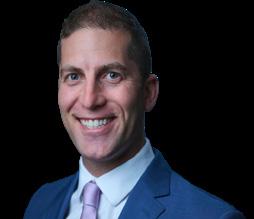
Benefit amounts have not increased over the years, so what can companies do to help their employees?

THE NUMBER-ONE complaint we hear from HR leaders is that their employees say they need greater vision coverage. Traditionally, eyeglasses and lenses have been very expensive, and most group benefit plans include some vision coverage, which helps subsidize the cost. However, the amounts haven’t really changed over the years. Employees may have $150 to $200 coverage every 24 months that they can use toward the purchase of glasses – but glasses cost far more than that. So why hasn’t the benefit amount increased? It’s likelytdue to exposure to extremely high claims. If companies offered substantially higher vision coverage, there would be a dollar-for-dollar increase in
claims, which would not help at renewal time.
If the benefit amount is not going to change any time soon, what can companies do to help their employees? Recent reports show there is cause for concern, because people – employees – are facing many vision and vision care issues, and this can have an impact on their productivity and health.
Almost half of Canadians who had vision benefits in 2022 didn’t plan to use their available coverage by the end of that year, says the Canadian Eye Exam Survey by Specsavers. For 2023, the survey reveals that one-in-four
Canadians who do not wear corrective lenses have not had an eye exam in at least 10 years, including 10 percent of Canadians who have never had an eye exam. The reasons for not going for an eye exam more frequently include cost (33 percent) and no symptoms of vision loss (22 percent).
In addition, the report says over one-third of Canadians (35 percent) would only book an eye exam if they experienced vision issues. However, catching eye diseases early through a comprehensive eye exam allows for preventative measures to maintain as much vision as possible. What many don’t know is that often, eye diseases such as glaucoma progress without symptoms in the early stages.
Moreover, time at work may be contributing to vision problems, as research now points to prolonged screen time as a cause of or contributor to digital eye strain, dry eye disease, and myopia (nearsightedness).
The World Health Organization (WHO) says increased screen time and time spent indoors are leading to more people suffering from myopia. It says that by 2050, 50 percent of people worldwide will have myopia.
The kicker is that 75 percent of vision loss is preventable and treatable, and half of Canadians don’t know this. Specsavers and the Canadian Council of the Blind say eye exams for those without pre-existing conditions should occur at a minimum of every two years, and every year for Canadians under 18 and over 65.
fits plan. If employers increase their vision coverage, they could be penalizing employees who have perfect eyesight. Instead, employers could introduce a health care spending account (HCSA) or increase current allowances. This option adds a tremendous amount of flexibility for all employees.
The addition of eye exam coverage
Finally, since the cost of eye exams seems to be an issue with Canadians, employers should consider changing the eye exam parameters. Most Canadian companies offer a fixed dollar amount toward eye exams every 24 months, perhaps $75 or $100. If employers remove the dollar amount and change it to Reasonable &
The key to good eye health for the long term is prevention – and employers can play a huge role in preventing vision health issues
Employers can play a huge role in prevention
The key to good eye health for the long term is prevention – and employers can play a huge role in preventing vision health issues.
However, if group benefit plans aren’t going to increase vision allowances any time soon, what can Canadian employers do to help their employees?
Employers can start by introducing preferred provider networks – establishing a relationship with a national eyewear company will allow employees to save dollars if they shop at those stores. They can also educate employees on online eyewear companies. These providers might not offer brand-named glasses, but they will keep dollars in employees’ pockets.
The next consideration is removing vision coverage entirely from the bene -
Customary, they offer far more flexibility to their employees. This means the insurance carrier will approve the exam amount based on the average cost associated within that specific geographical region. If an optometrist charges $100 in Brampton, ON, is that reasonable and customary? If an optometrist charges $150 in Vancouver, BC, is that reasonable and customary?
Improve workplace conditions to prevent eye strain
Employers can also improve conditions within the workplace – whether employees work in the office or from their homes – to help prevent eye strain. Employers can provide information on vision health, encourage workers to have regular eye exams, offer educational interventions, and develop official guidance on safe screen use.
Experts recommend that employees:
• Limit screen use and take breaks –workers should follow the 20-20-20 rule to reduce digital eye strain. They should spend at least 20 seconds looking at something at least 20 feet away every 20 minutes. Employers can encourage participation by setting timers to prompt employees to take a break.
• Install screen filters or use computer glasses
• Go outside or just get up from their desks and move around
• Ensure their screens at the proper angle to their eyes
• Move the screen to an angle where they are not straining to look up, and keeping their eyes open wider
• Use lubrication drops with no preservatives
• Have safety measures at work, such as protective eyewear or eyewash stations as necessary
In a 2021 report, Fighting Blindness Canada and the Canadian Council of the Blind claimed that, in 2019, vision loss cost Canadians $32.9 billion. Six billion dollars is spent every year on indirect health costs and lost productivity, including reduced workforce participation and productivity, additional time off work due to illness and caretaking, loss of future earnings due to premature mortality, and loss of caregivers’ income. Employers will benefit from supporting vision health, whether they do that with flexible vision coverage or by creating a workplace where vision health is a priority. They can build a culture that shows employees they care, while at the same time increasing productivity and engagement.


Aaron Pittman and Equiton’s forward-thinking strategy in private
real estate brings a crucial layer of stability amid Canada’s turbulent economic climate
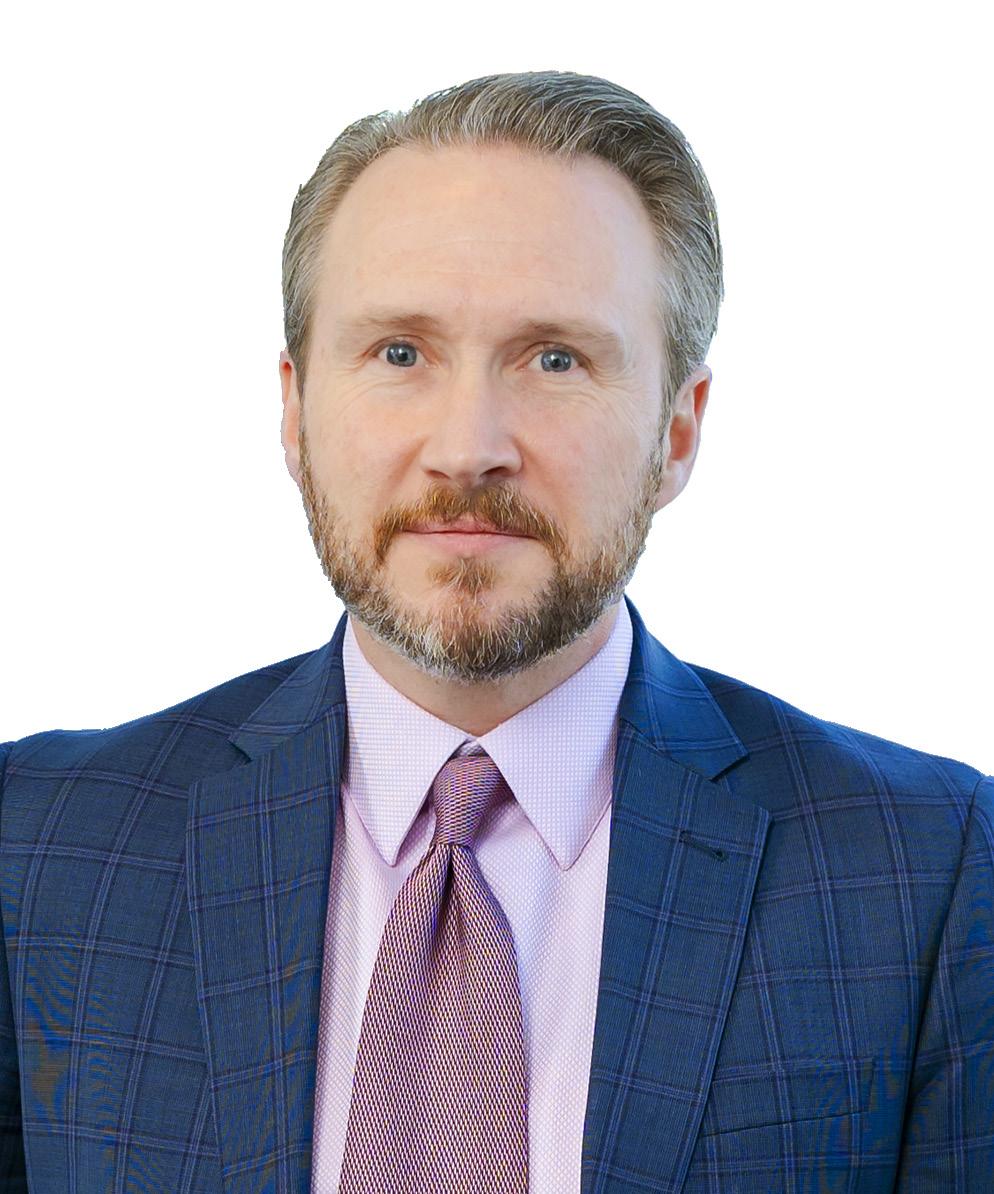
EQUITON, A LEADING Canadian private equity real estate firm, is in the midst of a strategic shift toward institutional investments that it believes will tap into the growing global appetite for Canadian real estate among diverse pools of capital available worldwide. Equiton’s transition reflects a mature understanding of market dynamics and growth opportunities beyond the limited retail sphere.
At the forefront of this transition is Aaron Pittman, Equiton’s head of institutional investments. Pittman’s career has seen him help guide the evolution of several firms from largely retail-oriented shops to the institu-
tional world. “It can be a challenging, yearslong process,” says Pittman. “Not all firms will have the patience to follow through on institutional strategy, but for those that do, the results are transformational.”
Pittman outlines the stark dichotomy between the retail and institutional investment spaces, highlighting the global scale and vast potential of the latter.
Pittman’s career spans over two decades on the institutional side of the business. His unique path through various roles within the sector has equipped him with a comprehensive understanding of institutional asset-gathering. This breadth of experience allows him to act as a “translator” among specialized teams and functions, facilitating effective communication and strategy implementation.
Pittman’s approach to career progression deviated from the more traditional siloed ladder; rather, he sought exposure across all facets of the institutional business, valuing the diversity of perspectives over a linear climb.
“I consciously pursued a varied experience – ranging from business development/investor relations to client servicing, consultant relations, and content management. This wideranging exposure allowed me to serve as a link among highly specialized teams, facilitating
communication between participants who often speak ‘different languages’,” Pittman says.
“The diversity of my roles over the past 20-plus years may have been somewhat atypical, often earning me the moniker ‘Swiss Army knife,’ largely attributable to my broad perspective. This versatility has proven particularly beneficial in my role at Equiton, where the ability to wear multiple hats and possess wideranging expertise is essential.”
Pittman’s breadth of expertise empowers institutional investors with tailored strategies and comprehensive insights, facilitating informed decision-making and optimal portfolio performance.
Since its inception in 2015, Equiton has shown tremendous growth in the Canadian real estate investment landscape. With a strategic focus on private real estate, the firm has not only expanded its operational footprint but has also significantly strengthened its investment portfolio, echoing a commitment to delivering tangible value to its stakeholders.
As the head of institutional investments, Pittman says aligning capital raise activities and business development strategies with the evolving needs of institutional investors is crucial.
“Institutional investors are at the top of the sophistication curve, a trajectory that is

continuously expanding. To stay relevant and become a suitable partner for large institutional capital pools, adopting an outside-looking-in perspective is essential,” emphasizes Pittman.
“This approach is necessary because many managers lose sight of the fact that their contribution is merely a segment of the plan sponsor’s entire ecosystem. We become a component of a larger mechanism. Keeping pace with the ever-changing landscape requires a mindset driven by intellectual curiosity.”
Equiton’s role in addressing supply issues
Pittman highlights that Canada is currently facing a generation-spanning housing crisis. In recent years, Canada has distinguished itself on the global stage with population growth that far outpaces even its fastest-growing G7 peers. This dynamic, coupled with an entrenched shortfall of housing supply, has reshaped Canada as one of the least-affordable housing markets in the world. It could be several decades before supply catches up to surging demand, says Pittman, making housing a critical issue for all Canadians.
In the face of these challenges, Equiton takes a proactive stance as a leader in the real estate sector, contributing positively by increasing supply – developing multi-family residences and bringing new inventory to market. Pittman notes that this important effort is expected to grow easier with Canadian governments at all levels focusing political will on encouraging the development of new housing stock; however, he emphasizes that addressing the housing crisis will ultimately require the active collaboration of privatesector entities like Equiton.
“Recent policy changes are a welcome start, but more needs to be done to reduce unnecessary development charges, shorten timelines, and get shovels in the ground,” says Pittman. “Canada must let home builders do what they do best: build homes.”
Equiton’s commitment to its investors and expanding Canadians’ knowledge of real estate has led to an exciting new collaboration with the John Molson School of Business at Concordia University. This partnership will foster innovative research into the landscape of real estate investment in Canada.
“This partnership represents a fusion of the best of both worlds: Equiton’s investment prowess and Concordia’s academic expertise in the development of large language models and machine learning. This collaboration allows us to explore
ments when financials don’t make sense.”
Such initiatives not only bolster Equiton’s strategic capabilities but also signify a forward-thinking approach to addressing the complex dynamics of real estate markets.
The outlook at Equiton
Institutional investors are increasingly setting their sights on best-in-class assets characterized by supply and demand fundamentals and durable cash flows. These criteria form the bedrock of investment strategies that aim to mitigate risk while
“[Institutional strategy] can be a challenging, years-long process. Not all firms will have the patience to follow through ... but for those that do, the results are transformational”
Aaron Pittman, Equiton
new territories uniquely. It’s an approach I believe may be unprecedented in our industry,” Pittman says.
“The research is being conducted by Dr. Erkan Yönder and his team. We’ve seen some of the early work he’s done and are absolutely delighted, and looking forward to coming insights. So far, we’ve only scratched the surface of what we can achieve from this relationship, and we’ve already begun the preliminary planning to broaden and deepen the research.
“The integration of artificial intelligence with academic models removes emotion from the equation. While perspectives can be clouded by unconscious biases, particularly in real estate, our focus is to minimize emotional influence. At Equiton, we like to say our approach to real estate investing is passion without emotion. We prioritize due diligence and are willing to walk away from invest-
ensuring steady, predictable returns.
Equiton, with its strategically diversified portfolio spanning 17 key regions, carefully selects properties that align with these criteria, ensuring they are positioned for long-term growth and resilience.
Equiton’s focus on managing properties in vibrant, growth-oriented regions ensures that its portfolio is attractive for its current cash flow generation, offering peace of mind to investors looking for alternative investment horizons.
The firm is not only strategic but client-focused, Pittman adds. “True customer focus requires a detachment from your own goals with a singular focus on an exploration of a solution for the client. A clear and open two-way dialogue always results in the most meaningful solution fostering long-term partnerships, and longterm thinking underpins our approach.”
What TD Asset Management Inc. (TDAM) has learned over 35 years of experience managing real estate investments with one of the longest-tenured portfolios in Canada
AT THE core of the TD Greystone Real Estate Strategy is the conviction that sustainable income from quality assets and the growth of that income are the primary drivers of longterm real estate returns.
Central to this strategy is the ownership of strategically significant real estate investments right across Canada, rather than concentrated in three major cities within the country.
The TD Greystone Real Estate Strategy emerges as one of Canada’s premier openended real estate investment vehicles, with an impressive gross asset value exceeding $23 billion. Since its pooled-fund inception in 2004, the strategy has delivered an exceptional annualized performance of over nine percent, a testament to its effective management and strategic foresight.
Part of driving this success at TD Asset Management Global Real Estate Investment are Luke Schmidt, head of transactions, Matt Sych, head of portfolio and asset management, and Mark Cooksley, head of development.
Prairie wisdom and portfolio management
In conversation with Benefits and Pensions Monitor, Sych attributed the disciplined and risk-aware approach to the strategy’s prairie roots, emphasizing the importance of stability and long-term value in real estate investments. “We don’t overreact,” Sych said, highlighting a patient, measured approach to market fluctuations and trends.
He went on to say, “With our firm initially established through Saskatchewan-based

pension plans, we have a deep understanding of the critical, long-term role real estate plays in a pension portfolio.”
Sych said that this understanding has always been fundamental to the firm’s approach. “For over 35 years, we have managed every asset class, recognizing the long-term nature of real estate and the steady income and growth it contributes to the pension portfolio. Consequently, we maintain a steady course through various cycles, whether related to specific property types or broader financial crises, valuing the stability real estate brings to the overall pension portfolio’s income.”
Sych also explained the decision to integrate multi-unit residential properties into the portfolio in 2008, citing a fundamental supply-demand imbalance and the segment’s attractive attributes as an inflation hedge. Unlike commercial properties with longer lease terms, the shorter leases in residential
real estate offer flexibility to adjust rents annually, capturing growth while providing a very stable income stream.
Within real estate, the office sector has largely been dismissed as dead. However, Cooksley pointed out common misconceptions about commercial real estate (CRE), from the conflation with single-family housing markets to the premature obituaries of the office space sector. He argued for a nuanced understanding of CRE’s unique value proposition, especially in terms of income growth potential.
“The notion that the office sector is dead is far from accurate. Despite facing challenges, the office market is alive and evolving. There has been a slower return to office spaces in both Canada and the US compared to other parts of the world, yet there’s a clear trend toward highquality, well-located buildings with excellent transit connections and amenities. This shift
is evident in our portfolio, reflected in both tenant demand and investment interest.”
Another misconception Cooksley addressed is the idea that the single-family residential market can be accurately compared to commercial real estate. It can’t – because income generation is not the primary factor considered when acquiring single-family residential properties.
Lastly, the idea that capitalization rates are directly tied to investment yields is also a misconception. While cap rates do move with interest rates, their relationship isn’t strictly linear. Unlike fixed-rate bonds, cap rates can increase due to income rising faster than valuations, as was the case in 2022 and 2023. Moreover, commercial real estate’s value is also influenced by its income potential and growth prospects, which can lead to a decrease in cap rates on a relative basis.
The current environment, marked by the COVID-19 pandemic and reflation, presents unique challenges and opportunities, with certain sectors like industrial and residential real estate seeing capital appreciation.
As Schmidt highlights, what sets this cycle apart is the varying impact on different property types. Unlike past cycles when all property types would generally rise or fall together, this downturn has seen a clear divergence. Industrial and residential sectors have experienced capital appreciation, a rarity in downturns.
Another distinctive aspect is the battle between rising cap rates and income growth, particularly notable in the industrial sector. Despite the upward pressure on cap rates and yields, the industrial sector saw significant income growth, offsetting these pressures and leading to value stability or even appreciation. The residential sector similarly kept pace due to strong income growth, unlike the office sector, which suffered from weaker fundamentals.
Diversification emerged as a key strategy in managing portfolio performance. Schmidt asserted, “By not being overly concentrated in any particular property type, we could maintain the stability and returns of our portfolio. The industrial sector, having led the market in recent years, was clearly an advantage for industrial-centric portfolios. However, it’s now the residential sector that’s taking the lead, and a more diversified portfolio will reap the benefits of this rotation.”
Schmidt noted that quality remains a constant factor in recovery from downturns. “Quality always tends to perform when we come out of down cycles. Highquality office, retail, and industrial properties will outperform.”
As to where the cap rates are going, Schmidt said, “At the start of this year, we were observing continued increasing pressure on cap rates, particularly within the office and industrial sectors, and [we] anticipate this trend might extend into the second quarter as well. However, with indications that interest rates may decrease later in the year, there’s a growing sentiment that cap rates could be nearing their peak, potentially by the end of the second quarter or later into this year.”
The current outlook suggests we’re nearing a turning point in the market cycle, with optimistic expectations for improvements in cap rates as we move into the latter half of the year. This nearing of the cycle’s bottom is a positive development, signalling potential stabilization and recovery in the market’s overall dynamics.
The portfolio managers at TDAM take a very long-term perspective on all their portfolio investments, and with that future-forward outlook, part of the strategy has been to look to net-zero developments where it makes sense.
Cooksley said, “Our pioneering efforts in sustainable development have positioned us as a leader in the field, evidenced by our creation of Canada’s first net-zero industrial building
Sponsored by
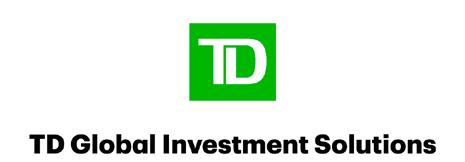
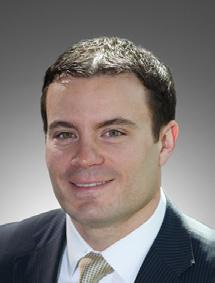
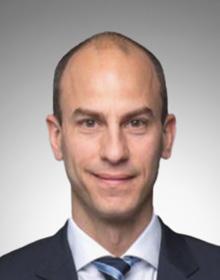
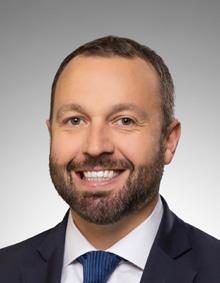
in Halifax, in partnership with Eastport Properties. This innovative project achieved a Zero Carbon Design certification from the Canadian Green Building Council, offering tenants the potential for negligible heating costs throughout the year, contingent on efficient building management. This achievement underscores our commitment to sustainability and the tangible benefits it brings.
“Our investment strategy is characterized by a long-term outlook, spanning 10 to 20 years, ensuring our portfolio remains aligned with future trends and values. This perspective extends to our development projects, where we prioritize sustainability alongside financial viability. By focusing on sectors like industrial and multi-family, we opt for slightly lower immediate yields in exchange for greater longterm income growth, liquidity, and asset value.
“Our commitment to sustainability is not only a fiduciary responsibility to our clients but also a strategic decision to future-proof our investments. For projects where net-zero construction is not immediately viable, we design with future electrification and conversion in mind, minimizing future costs and ensuring our buildings can adapt to evolving sustainability standards.”
By focusing on markets with strong growth metrics while avoiding capital-chasing assets, TDAM’s real estate strategy has a 35-year track record proving that strategic diversification and quality investment result in superior client outcomes in the ever-evolving real estate landscape.
For more information, visit https://www. td.com/ca/en/global-investment-solutions.
As yield
in
fixed
income
picks
up,
a
regime
shift may have begun –but alternatives remain fundamental for institutions, says expert
PENSION FUNDS have been steadily increasing their allocations to alternative asset classes like real estate, infrastructure, private equity, and private debt, a trend driven by the pursuit of higher returns and portfolio diversification.
However, while the alternative investment opportunity set is diverse, and plan sponsors have chosen their paths based on their unique objectives, “there seems to have been a bias among pension plans for private market versus liquid alternatives,” says Jim Cole, managing director and institutional portfolio manager at PH&N Institutional, RBC Global Asset Management Inc. He says a likely reason for this is that “the long-term cash-flow generation profile of many private market asset classes is a good fit for what pension plans are striving to accomplish.”
As for real estate, Cole says that core real estate has featured in pension plan investment programs for many years. It was the era of very low interest rates that saw a significant pick-up in demand for core infrastructure and private debt as alternatives to public market fixed-income portfolios as plans focused efforts on maintaining expected returns at levels that would continue to support the benefit objectives of pension plan sponsors.
As for liquid alternatives, various forms of alternative public market credit have also found their way into portfolios as a way to build yield and income in institutional portfolios in what had been a low interest rate environment for many years.
“So, the theme for much of the past decade has been yield enhancement and portfolio diversification,” Cole says. “However, we may
be in the early stages of a regime shift as fixed-income markets are now offering materially higher yields.”
The challenge of low yields in traditional fixed-income markets has also driven demand in global multi-asset credit strategies that offer the flexibility to invest across sovereign and corporate credit and to invest in both investment-grade and high-yielding issuers, depending on market conditions. Allocations
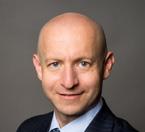
the overall return profile of an alternatives investment program. As well, specialized funds can offer the opportunity to access tactical opportunities that are presented by a unique and potentially temporary set of market circumstances.”
Specialized investment strategies are often designed to be very concentrated on one small segment of investment markets, says Cole. “Therefore, access to several special-
“We may be at the early stages of a regime shift as fixed income markets are now offering materially higher yields”
Jim Cole, PH&N Institutional
to such public market strategies have helped bolster the yield profile in public market fixed-income portfolios.
Specialized funds can play valuable role
Cole says specialized funds can also play a valuable role in an institutional investment portfolio. “Alternatives are a very diverse asset class, even within individual sectors such as real estate or infrastructure. Specialized funds can be useful to round out core alternative investment exposures by targeting specific risk premiums or sources of return.
“Specialized strategies may be used to take advantage of the unique skillsets of some specialized managers, and through this expertise offer the opportunity to improve
ized funds may be needed to build the desired overall portfolio exposures. This process can be time-consuming and requires very specialized knowledge to consider such investments. Investors will want to ensure they have access to sufficient resources and investment knowledge to consider specialized strategies to any significant degree. Many institutional investors have these resources available to them, and in these instances, it’s common for specialized strategies to form a part of the investor’s overall alternatives program.
“For smaller and mid-sized institutional investors that perhaps don’t have the resources to integrate specialized strategies into their investment programs, the diversification and governance simplicity offered by alternatives funds with broader mandates can or may make them more suitable.”
While alternative investments do not necessarily present additional investment risk relative to traditional asset classes, there are important reasons why due diligence may be more extensive than for some traditional asset classes.
“Differences across strategies, and therefore potential for greater return dispersion, can exist to a greater degree with alternatives versus more traditional asset classes,” says Cole. “There are also often a number of additional operational complexities that are not necessarily presented in traditional asset classes. For example, an investor will likely want to consider factors such as liquidity, portfolio concentration, derivative usage, leverage, performance fees, etc. For these reasons, we do often see a desire for more operational and investment due diligence for alternative investment strategies.”
“It’s common for specialized strategies to form a part of the investor’s overall alternatives program”
Jim Cole, PH&N Institutional
As an expert in the field, Cole says institutional investors should approach the decision to invest in alternative asset classes based on their particular circumstances, including considerations such as long-term return objectives, inflation protection, governance structure, and liquidity needs.
“Lower yields and the desire for return diversification have been important forces driving demand for alternative investments over the past decade,” he says. “Fundamentally, we believe we will be in a lower interest-rate world going forward, if perhaps not as low as it
was immediately post-global financial crisis or post-pandemic. And the uncertain economic backdrop may result in elevated volatility in traditional asset classes. Alternative asset classes will continue to play a role in institutional portfolios for the same reasons they were sought out in the first place.”
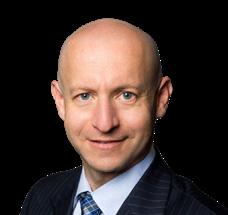

Circumstances offer opportunities to contribute to housing solution while driving value for investors
CANADA’S HOUSING crisis presents a multifaceted challenge that has garnered significant attention due to its profound implications for Canadians across the socioeconomic spectrum. The crisis is characterized by a shortage of affordable homes and by rapidly rising real estate prices; this article aims to provide a comprehensive analysis of the structural causes of the crisis.
Key contributing factors to the housing crisis
Reliance on immigration for economic growth
Canada’s strategic reliance on immigration to drive economic growth and demographic expansion has positioned it as one of the fastest-growing G7 nations. However, this has placed immense pressure on the housing market, especially in major urban centres where demand significantly outstrips supply, resulting in soaring housing prices and making homeownership increasingly unattainable for many Canadians.
Government regulation, development charges, and taxes
The regulatory framework governing housing development in Canada significantly contributes to the housing crisis. Developers are hindered by lengthy permitting processes, high development charges, rent controls, and various taxes that escalate the costs of housing construction. These barriers not only deter new developments, but also delay the introduction of new housing to the market, tightening supply and exacerbating affordability issues.
The
The direct consequence of high immigration rates coupled with restrictive development policies is a pronounced housing shortage, particularly acute in major urban centres. This shortage leads to overcrowding and housing insecurity, as many Canadians struggle to find suitable housing.
The widening gap between housing prices and average incomes has led to a decline in homeownership rates, particularly among younger generations. Cities like Vancouver and Toronto have experienced exponential real estate market growth, pushing many Canadians toward renting, which further exacerbates the demand for rental housing.
As homeownership becomes increasingly unaffordable, more Canadians are turning to the rental market, spurring a boom in multi-residential real estate. This sector offers significant investment returns due to high demand and low supply. However, the pace of new rental unit construction has not kept up with the growing demand, resulting in even lower vacancy rates and higher rental costs.
In response to the escalating housing crisis, the Canadian government has implemented
several measures aimed at facilitating housing development, including tax breaks for new rental construction and streamlined regulatory processes. However, these efforts, while steps in the right direction, are insufficient to address fully the systemic issues underlying the crisis.
For a durable resolution to the housing crisis, Canada must adopt a comprehensive approach that addresses both the supply and demand sides of the equation. This includes adjusting immigration levels to align more closely with housing capacity, simplifying the development approval process, and fostering investments in housing infrastructure.
With conservative assumptions and trying to assess the implications of current policy changes, Fiera Real Estate’s projections indicate a persistent shortfall in rental housing, with an estimated deficit of over 500,000 units by 2040. This stark discrepancy highlights the urgent need for accelerated development in the multi-residential sector to accommodate the growing number of renters. Without substantial investment in rental housing, the affordability crisis will only intensify, leading to greater inequality and social instability.
The need for a holistic approach
Canada’s housing crisis requires a holistic approach if it is to be resolved. While shifting government policies to minimize interference with the private sector is necessary, such policies often fall short regardless. More must be done to leverage free-market forces, which can meet housing demand effectively and adjust prices to realistic levels. By understanding the root causes of the crisis and implementing minimal but targeted interventions, Canada can work toward building a housing market that is accessible, affordable, and sustainable for all Canadians.
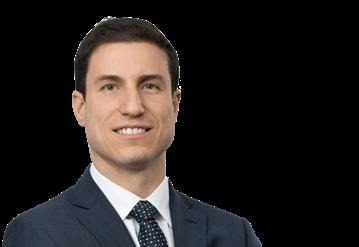
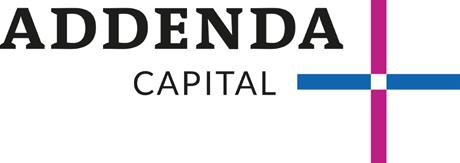
Contact: Janick Boudreau, CFA
Executive Vice-President
Business Development and Client Partnerships
Address: 800 Rene-Levesque Blvd. W., Ste. 2750 Montreal, QC, H3B 1X9
PH: 514-908-1989
Fax: 514-287-7200
Email: info@addendacapital.com
Web: addendacapital.com/en-ca/ Alternatives management provided to: Canadian pension plans, 31; Canadian foundations, 24; Canadian endowments, 5
Total Canadian alternatives clients: 130 Alternatives asset classes: Commercial mortgages, $4,366.7M
Alternative AUM for Canadian institutional investors: $3,927.6M
Manager style: Core
Ownership structure: Principals, 3%; Third-party (Co-operators Financial Services Limited), 97%
Alternative investment professionals: 14
Established: 1985
Minimum investment: Pooled $5M; Separate, $20M
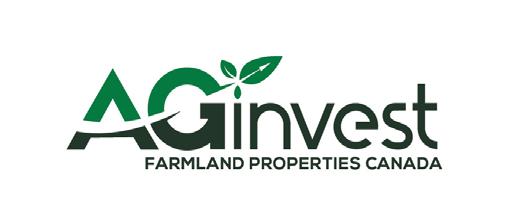
CANADA INC.
Contact: Oliver Wolf
Business Development Associate
Address: 80 Keil Drive South, Unit #3
Chatham, ON, N7M 3H1
PH: 519-352-8413
Email: oliver.wolf@aginvestcanada.com
Web: aginvestcanada.com
Total Canadian alternatives clients: 100
Alternatives asset classes: Farmland, $120M
Alternative AUM for Canadian institutional investors: $60M
Manager style: Active
Ownership structure: Principals, 100%
Alternative investment professionals: 1
Established: 2012
Minimum investment: Pooled, $150,000; Separate, $150,000

Contact: Wendy Brodkin, Managing Director
Address: 200 Bay Street North Tower – floor 12 Toronto, ON, M5J 2J2
PH: 647-375-2803
Email: wendy.brodkin@alliancebernstein.com
Web: alliancebernstein.com/americas/en/ institutions/home.html
Alternatives management provided to: Canadian pension plans, 9; Canadian endowments, 1
Total Canadian alternatives clients: 10
Alternatives asset classes: Direct real estate, $35M; Private debt, $439M; Hedge funds, $257M
Alternative AUM for Canadian institutional investors: $731M
Manager style: Active
Ownership structure: Principals, 14%; Publicly held, 25%; Third-party, 61%. Though our majority shareholder is Equitable Holdings, as a firm we operate independently.
Alternative investment professionals: 216
Established: 1971
Minimum investment: Pooled, $10M; Separate, $100M

Contact: Yvonne Davidson, Principal Capital Raising & Investor Relations
Address: 1 York Street, Suite 1100 Toronto, Ontario, M5J 0B6
PH: 416-681-3414
Email: yvonne.davidson@bgo.com Web: bgo.com
Alternatives management provided to: Canadian pension plans, 105; Canadian foundations, 15; Canadian endowments, 14
Total Canadian alternatives clients: 166
Alternatives asset classes: Direct real estate, $110,248M
Alternative AUM for Canadian institutional investors: $14,478M
Manager style: Active management
Ownership structure: Principals, 36%; Publicly held, 51%; Third-party, 13%. Tetragon, a minority owner, is a publicly traded European investment firm with an asset management platform and was a founding shareholder in GreenOak. Tetragon has no role or formal vote in BGO’s investment process or decisions. Further, Tetragon and BGO do not share any operations,
infrastructure, or other resources. Tetragon does not have an approval right on BGO’s business plan or budget, or in the investment decisions
BGO makes on behalf of its investment vehicles.
Alternative investment professionals: 595
Established: 1978
Minimum investment: Pooled, $71,459M; Separate, $38,789M
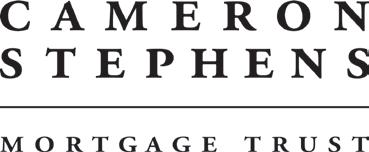
Contact: Daniel Marchand
Managing Director, Capital Markets
Address: 320 Bay Street Toronto, Ontario, M5H 4A6
PH: 514-515-9353
Fax: 416-591-9001
Email: dmarchand@cameronstephens.com
Web: cameronstephens.com
Alternatives management provided to: Canadian foundations, 5
Total Canadian alternatives clients: 200
Alternatives asset classes: Direct real estate, $80M; Mortgages, $3,500M
Alternative AUM for Canadian institutional investors: $2,700M
Manager style: Mortgages – bottom up Ownership structure: Principals, 100%
Alternative investment professionals: 53
Established: 2004
Minimum investment: Pooled, $150,000; Separate, $10M

Contact: Brent Wilkins
Head of Institutional Sales (Canada)
Address: 1400-130 King Street West Toronto, ON, M5X 1C8
PH: 416-862-2020
Fax: 416-363-2089
Email: bwilkins@cclgroup.com
Web: cclgroup.com
Alternatives management provided to: Canadian pensions plans, 91; Canadian foundations, 31; Canadian endowments, 2
Total Canadian alternatives clients: 535
Alternatives asset classes: Direct real estate, $5,297.30M; Private debt, $437.80M; Long/short equities, $4,055.18M; Infrastructure, $2,381.74M;
Private equity, $326.51M; Multi-asset/GTAA, $1,868.50M
Alternative AUM for Canadian institutional investors: $14,367.03M
Manager style: Active: Market neutral, long/ short, portable alpha strategies. Core, growth, value: infrastructure (traditional & energy). Middle market: private equity, real estate, long/ short strategy. Growth: private debt Ownership structure: Principals, 100% Alternative investment professionals: 198
Established: 1982
Minimum investment: Pooled, varies: $5-10M; Separate, varies: $10-$250M

Contact: Brent Wilkins
Head of Institutional Sales (Canada)
Address: 1400-130 King Street West Toronto, ON, M5X 1C8
PH: 416-862-2020
Fax: 416-363-2089
Email: bwilkins@cclgroup.com
Web: cclinfrastructure.com
Alternatives management provided to: Canadian pension plans, 24; Canadian foundations, 15; Canadian endowments, 1 Total Canadian alternatives clients: 234 Alternatives asset classes: Infrastructure, $2,381.74M
Alternative AUM for Canadian institutional investors: $2,381.74M
Manager style: Core/grow-to-core/core plus Ownership structure: Principals, 100%
Alternative investment professionals: 38
Established: 2005
Minimum investment: Pooled, $5M; Separate: Infrastructure does not currently offer separately managed accounts; however, they do periodically have co-investment opportunities in specific infrastructure investments of varying sizes.

Contact: Brent Wilkins
Head of Institutional Sales (Canada)
Address: 1400-130 King Street West Toronto, ON, M5X 1C8
PH: 416-862-2020
Fax: 416-363-2089
Email: bwilkins@cclgroup.com
Web: cclinvest.com
Alternatives management provided to: Canadian pension plans, 13; Canadian foundations, 2; Canadian endowments, 1
Total Canadian alternatives clients: 34 Alternatives asset classes: Long/short equities, $3,830.58M; Multi-asset/GTAA: $1,868.50M
Alternative AUM for Canadian institutional investors: $5,699.08M
Manager style: Active: Market neutral, long/short, portable alpha strategies, core, growth, value Ownership structure: Principals, 100%
Alternative investment professionals: 100
Established: 1982
Minimum investment: Pooled, $10M; Separate, varies: $15-$250M
Contact: Carlo DiLalla
Managing Director & Head
Institutional Asset Management
Address: 161 Bay Street, Suite 2230 Toronto, ON, M5J 2S1
PH: 416-980-2768
Email: carlo.dilalla@cibc.com
Web: cibcam-institutional.com
Alternatives management provided to: Canadian pension plans, 18; Canadian foundations, 1; Canadian endowments, 1
Total Canadian alternatives clients: 20
Alternatives asset classes: Private debt, $55M; Multi-asset/GTAA, $620.1M; Currency overlay, $8,780.0M; Alternative credit, $14.1M
Alternative AUM for Canadian institutional investors: $9,469.2M
Manager style: Top-down macroeconomic fundamental process, integrating quantitative inputs with qualitative research Ownership structure: Publicly held, 100%.
CIBC Asset Management Inc. is a wholly owned subsidiary of the Canadian Imperial Bank of Commerce (CIBC), a widely held, publicly traded company.
Alternative investment professionals: 50 Established: 1972
Minimum investment: Pooled, $10M; Separate, $25M
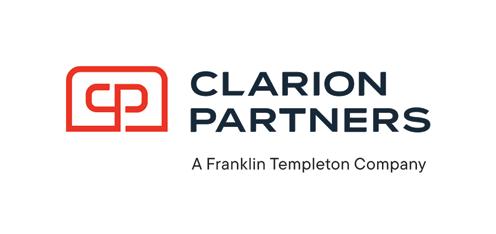
Contact: Hugh Macdonnell, Managing Director
Address: 230 Park Avenue
New York, NY, USA 10169
PH: 212-883-2500
Email: clarion.partners@clarionpartners.com
Web: clarionpartners.com
Alternatives management provided to: Canadian pension plans, 16; Canadian foundations, 3
Total Canadian alternatives clients: 20
Alternatives asset classes: Direct real estate, $101,509M
Alternative AUM for Canadian institutional investors: $4,376M
Manager style: Active
Ownership structure: Principals, 18%; Third-party, 82%
Alternative investment professionals: 205
Established: 1982

Contact: Brent Wilkins
Head of Institutional Sales (Canada)
Address: 1400-130 King Street West Toronto, ON, M5X 1C8
PH: 416-862-2020
Fax: 416-363-2089
Email: bwilkins@cclgroup.com
Web: crestpoint.ca
Alternatives management provided to: Canadian pension plans, 54; Canadian foundations, 14
Total Canadian alternatives clients: 254
Alternatives asset classes: Direct real estate, $5,297.30M
Alternative AUM for Canadian institutional investors: $5,297.30M
Manager style: Core plus
Ownership structure: Principals, 100%
Alternative investment professionals: 38
Established: 2011
Minimum investment: Pooled, $5M

Contact: Natalie Bisaillon
Vice President & Chief of Partnership and Institutional Client Relations
Address: 1 Complexe Desjardins
20th Floor, South Tower
Montreal, QC, H5B 1B2
PH: 514-214-5742
Fax: 514-281-7253
Email: natalie.bisaillon@desjardins.com
Web: dgam.ca
Alternatives management provided to: Canadian pension plans, 3; Canadian endowments, 8
Total Canadian alternatives clients: 11
Alternatives asset classes: Direct real estate: $3,560.12M; Long/short equities: $827.59M; Multi-asset/GTAA: $1,231M; Infrastructure: $4,769.46M
Manager style: Long-term investments; fundamental research; quantitative tools
Ownership structure: Third-party, 100%. Desjardins Global Asset Management is part of the Desjardins Movement, which is a financial services co-operative that belongs to its members.
Alternative investment professionals: 32
Established: 1998
Minimum investment: Pooled, $5M; Separate, $50M

Contact: Aaron Pittman, SVP
Head of Canadian Institutional Investments
Address: 333 Bay Street, Suite 1800 Toronto, Ontario, M5H 2R2
PH: 416-578-8700 x119
Email: apittman@equiton.com
Web: equiton.com/institutional-investors
Alternatives asset classes: Real estate –value add
Ownership structure: Third-party: 100%
Alternative investment professionals: 10
Established: 2015
Minimum investment: Separate, $5M

Contact: Michael Barnett Executive Vice President, Institutional
Address: 483 Bay St. Toronto, ON, M5G 2N7
PH: 416-217-7773
Email: michael.barnett@fidelity.ca
Web: institutional.fidelity.ca
Total Canadian alternatives clients: 5
Alternatives asset classes: Direct real estate, $2,937.5M; Long/short equities: $943.3M; Indirect real estate: $2,043.80M; Distressed Credit; Direct Lending; Private Equity MultiStrategy
Manager style: Dependent on the strategy Ownership structure: Private
Alternative investment professionals: N/A
Established: 1987
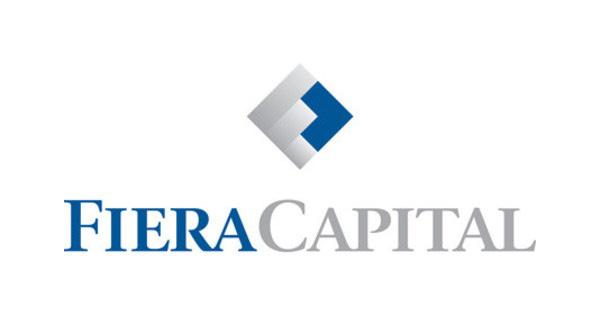
Contact: Colin Miller, Head of Sales
Address: 1981 McGill College Ave. Montreal QC, H3A 3A8
PH: 514-954-3300
Fax: 514-954-9692
Email: cmiller@fieracapital.com
Web: fieracapital.com/en
Alternatives management provided to: Canadian pension plans, 36; Canadian foundations, 67; Canadian endowments; 76
Total Canadian alternatives clients: 2,132
Alternatives asset classes: Direct real estate, $4,704.40M; Private debt, $4,331.93M; Long / short equities, $25.12M; Infrastructure, $2,047.10M; Private equity, $828.48M; Agriculture and timberland, $1,161.70M
Alternative AUM for Canadian institutional investors: $9,067.67M Manager style: Active
Alternative investment professionals: 129 Established: 2003
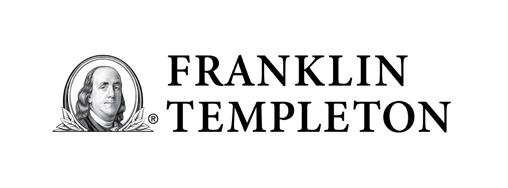
Contact: Dennis Tew, Head of Sales, Canada Address: 200 King St. W, Ste. 1400 Toronto, ON, M5H 3T4
PH: 416-957-6023
Email: dennis.tew@franklintempleton.ca
Web: franklintempleton.ca
Alternatives management provided to: Canadian pension plans, 24; Canadian foundations, 3
Total Canadian alternatives clients: 27
Alternatives asset classes: Direct real estate, $540M; Infrastructure, $145M; Private equity, $2,102M; Hedge funds, $211M
Alternative AUM for Canadian institutional investors: $2,998M Manager style: Various investment styles
across 10 distinct alternatives investment manager teams
Ownership structure: Principals, 36%; Publicly held, 64%
Alternative investment professionals: 120 E stablished: 1947
Minimum investment: Pooled $1M; Separate, Varies by strategy

GUARDIAN CAPITAL LP
Contact: Robin Lacey
Head of Institutional Asset Management
Address: 199 Bay St., Commerce Court W., Suite 2700
Toronto, ON, M5L 1E8
PH: 416-947-4082
Fax: 416-364-9634
Email: rlacey@guardiancapital.com
Web: guardiancapital.com
Alternatives management provided to: Canadian foundations, 1
Total Canadian alternatives clients: 2
Alternatives asset classes: Other, $151.16M
Alternative AUM for Canadian institutional investors: $151.16M
Manager style: Seeks to achieve its investment objectives primarily by investing in or selling short securities of issuers located primarily within North America. The strategy will be driven by ongoing credit research and macroeconomic analysis performed by the Manager. Composition will vary depending on market conditions and various phases of the economic and credit cycle. Principally holds investment grade and non-investment grade bonds, broadly diversified by issuer and industry, but may also invest in other securities, including, but not limited to, floating rate bank loans, convertible bonds, equities, warrants, real estate investment trusts and exchange-traded funds (ETFs). The strategy may also invest in credit, interest rate and index swaps or employ income generating option strategies. May engage in strategies relating to special situations such as reorganizations, restructurings, distressed situations, mergers or acquisitions as well as the use of leverage in order to hedge or enhance returns.
Ownership structure: Third-party, 100%. Guardian Capital LP is 100% owned by the parent company Guardian Capital Group Limited
Alternative investment professionals: 2
Established: 1962
Minimum investment: Pooled, $1M
Benefits and Pensions Monitor directories can be found at www.benefitsandpensionsmonitor.com
Contact: Frank Bartello, Senior Vice-President
Address: 199 Bay St.
Commerce Court W., Suite 2700 Toronto, ON, M5L 1E8
PH: 416-947-4017
Email: fbartello@guardiancapital.com
Web: guardiancapital.com
Alternatives management provided to: Canadian pension plans, 2; Canadian foundations, 2
Total Canadian alternatives clients: 35 Alternatives asset classes: Direct real estate, $459M
Alternative AUM for Canadian institutional investors: $459M
Manager style: Focus is on the preservation and enhancement of income. One of the key investment principles of the Fund is to acquire assets with rents at or below market and properties with prior insufficiencies. We believe we can effectively grow the income produced by the Fund’s assets over time, offsetting the potential risk of declining property values as a result of increasing cap rates.
Ownership structure: Third-party, 100%.
Wholly owned by Guardian Capital Group
Alternative investment professionals: 5
Established: 2013
Minimum investment: Pooled, $1M

Contact: Steven Marino
EVP Portfolio Management
Address: 33 Yonge Street, Suite 1000 Toronto, ON, M5E 1G4
PH: 416-507-2929
Fax: 416-361-0882
Email: steven.marino@gwlra.com
Web: gwlrealtyadvisors.com
Alternatives asset classes: Direct real estate, $16,427M
Manager Style: Core Canadian investment strategy, predicated upon acquisition, development, and management of highquality, income-generating real estate with the
potential for capital appreciation over time. Portfolio construction is shaped by exposure to key economic drivers, enduring locations, and a diversified asset mix of institutional-quality properties, with strong weightings in industrial and multi-family residential.
Ownership structure: Public: 100% wholly owned by Canada Life, which is a subsidiary of Great-West Lifeco.
Alternative investment professionals: 741
Established: 1993
Minimum investment: Pooled, $5M
Contact: Daren Atkinson, Principal Portfolio Manager – Institutional Clients
Address: 400 Burrard St., Suite 1500 Vancouver, BC, V6C 3A6
PH: 604-683-3391
Fax: 604-683-0323
Email: darena@leithwheeler.com
Web: leithwheeler.com
Alternatives management provided to: Canadian pension plans, 1; Canadian endowments, 1
Total Canadian alternatives clients: 6
Alternatives asset classes: Leith Wheeler Private Asset Fund, $18.42M
Alternative AUM for Canadian institutional investors: $13.13M
Manager style: Value
Ownership structure: Principals, 100%
Alternative investment professionals: 7
Established: 1982

PENDERFUND
Contact: Sarah Wildman, Director
Institutional & Family Office Wealth Services
Address: 1830-1066 W Hastings St. Vancouver, BC, V6E 3X2
PH: 604-250-6917
Fax: 604-563-3199
Email: swildman@penderfund.com
Web: penderfund.com
Alternatives asset classes: Private equity, $200M; Hedge funds, $465M
Alternative AUM for Canadian institutional investors: $500M
Manager style: Bottom-up fundamental active
management
Ownership structure: Principals, 89%; Publicly held, 11%
Alternative investment professionals: 8
Established: 2003
Minimum investment: Pooled, $10M; Separate, $25M

PICTET ASSET MANAGEMENT
Contact: François Forget
Head of Distribution – Canada
Address: 1000 de la Gauchetière Ouest, Suite 3100
Montréal, QC, H3B 4W5
PH: 514-518-8587
Email: fforget@pictet.com
Web: am.pictet
Alternatives management provided to: Canadian pensions, 1
Total Canadian alternatives clients: 1
Alternatives asset classes: Hedge funds, $1.4M
Alternative AUM for Canadian institutional investors: $1.4M
Manager style: Hedge funds (Asian event-driven, distressed & special situations, emerging markets relative value, Europe directional, Europe marketneutral, global directional, global market-neutral, Greater China, multi-strategy); private equity (entrepreneur capital, coinvestments, multistrategy, thematic); real estate (European value add, European core plus, global multi-manager); private debt (European private debt)
Ownership structure: Principals, 100%
Alternative investment professionals: 151
Established: 1980 (parent in 1805)
Minimum investment: Pooled, $1M; Separate, $50M

PIC TON MAHONEY ASSET MANAGEMENT
Contact: Taras Klymenko, Head of Institutional Business
Address: 33 Yonge Street, Suite 830
Toronto, Ontario, M5E 1G4
PH: 416-955-4108
Fax: 416-955-4100
Email: institutional@pictonmahoney.com
Web: pictonmahoney.com
Alternatives management provided to: Canadian pension funds, 2; Canadian foundations, 1
Total Canadian alternatives clients: 7
Alternatives asset classes: Long / short equities,
$3,071M; Hedge funds, $1,890M; Multi-asset / GTAA, $239M; Long/short credit, $2,072M; Merger arbitrage, $1,141M; Special situations credit, $243M
Alternative AUM for Canadian institutional investors: $971M
Manager style: Active
Ownership structure: Principals, 100%
Alternative investment professionals: 43
Established: 2004
Minimum investment: Pooled, $10M; Separate, $25M

Contact: Heather Wolfe
Senior Managing Director
Head of Canadian Business Development
Address: 1 York Street
Toronto, ON, M5J 0B6
PH: 416-408-7834
Email: heather.wolfe@slcmanagement.com
Web: slcmanagement.com
Alternatives management provided to: Canadian pensions, 46
Total Canadian alternatives clients: 79 Alternatives asset classes: Private debt, $46,902M; Other, $683M (includes all Canadian commercial mortgage assets managed by SLC Management, including BentallGreenOak)
Alternative AUM for Canadian institutional investors: $47,584M
Manager style: Our primary source of value-add within our fixed-income teams is credit analysis. We typically do not take active interest rate positions.
Ownership structure: Sun Life Capital Management (Canada) Inc. is an SLC Management company that is an indirect wholly owned subsidiary of Sun Life Financial Inc., a publicly traded company listed on the Toronto (TSX), New York (NYSE) and Philippine (PSE) stock exchanges under the ticker symbol SLF.
Alternative investment professionals: 53
Established: 2013
Minimum investment: Pooled, varies; Separate, varies
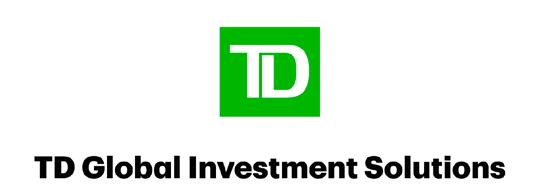
SOLUTIONS
Contact: Mark Cestnik, Managing Director
Address: 161 Bay St., 34th Floor Toronto, ON, M5J 2T2
PH: 416-274-1742
Email: mark.cestnik@tdam.com
Web: tdgis.com
Alternatives management provided to: Canadian pension plans, 173; Canadian foundations, 1; Canadian endowments, 36
Total Canadian alternatives clients: 262
Alternatives asset classes: Direct real estate, $21,548.59M; Private debt, $10,177.36M; Infrastructure, $2,372.92M; Global real estate, $86.39M
Alternative AUM for Canadian institutional investors: $34,185.26M
Manager style: Core plus/diversified Ownership structure: TD Asset Management Inc. is a wholly owned subsidiary of The TorontoDominion Bank.
Alternative investment professionals: 79
Established: 1987
Minimum investment: Pooled, $5M; Separate, $500M

Contact: Lauren Bloom
Head of Canada Distribution
Address: 77 King St. Suite 4240 Toronto, Ontario, M5K1G8
PH: 416-360-7214
Email: lauren.bloom@troweprice.com
Web: troweprice.com
Alternatives asset classes: Multi-asset/GTAA, $180.3M; Other, $63,209.4M, managed by investment advisory affiliates, including Oak Hill Advisors (OHA)
Manager style: Macro and absolute return strategies are fundamentally driven, trading long and short across global markets, seeking to provide strong risk-adjusted returns by combining a top-down macro view with bottom-up, idiosyncratic insights from T. Rowe Price’s global research platform through a repeatable investment process.
Ownership structure: Principals, 7%; Publicly held, 100%. T. Rowe Price Group, Inc., is an independent, publicly traded company with significant employee ownership. Common stock owned outright by our associates and directors, combined with outstanding vested stock options and unvested restricted stock awards, total approximately 7% of our outstanding stock and outstanding vested stock options as at December 31, 2023. Alternative investment professionals: 5 Established: 1937
Minimum investment: Pooled, $5M; S eparate, $60M

TREZ CAPITAL
Contact: Sho Kulidjian
Managing Director, Institutional Sales Address: 181 Bay Street, Suite 3840 Toronto, Ontario, M5J 2T3
PH: 416-350-1224
Fax: 604-638-2775
Email: shoghigk@trezcapital.com
Web: trezcapital.com
Alternatives management provided to: Canadian pension plans, 85; Canadian foundations, 3; Canadian endowments, 3
Total Canadian alternatives clients: 33,500
Alternatives asset classes: Private debt, $4.568B; Indirect real estate, $742M
Alternative AUM for Canadian institutional investors: $800M
Manager style: An alternative investment management firm focused on building communities for over 25 years by providing commercial real estate debt financings and equity investments through opportunistic funds, mandates, customized solutions and joint ventures.
Ownership structure: Principals, 100%
Alternative investment professionals: ~29
Established: 1997
Minimum investment: Separate, $5M
TRIOVEST
Contact: Luigi Luppi
VP Investor Relations
Address: Exchange Tower, 130 King Street West Suite 1710, PO Box 486 Toronto, ON, M5X 1E5
PH: 416-941-1284
Email: lluppi@triovest.com
Web: triovest.com
Alternatives asset classes: Direct real estate, $11,000M
Experts explain how institutions have used ETFs in the past, how they use them now, and how the industry is cultivating institutional relationships
IN 15 YEARS, ETFs upended the landscape for Canadian retail investors. In 2009 Canadian ETF assets under management amounted to $31.5 billion. At the end of February 2024, Canadian ETF AUM was $409 billion. That’s a 1,198.41 percent growth rate in just fifteen years. Just as these vehicles have grown in both popularity and sophistication, they have also expanded beyond ordinary retail investors. Now institutions and even pension funds are using ETFs as part of their strategic allocations.
Daniel Straus, director of ETFs and financial products research at National Bank of Canada Financial Markets, and Pat Dunwoody, outgoing executive director of the Canadian ETF Association (CETFA), explained how institutions have historically used ETFs and how that use case has evolved over time. They outlined why many institutional managers are using ETFs now and how the ETF industry is moving to meet that demand.
“In the early days, you would see it in survey data that institutions would come into a large amount of cash and then immediately put it into an index position... Because ETFs are so liquid and could accommodate huge trades right away, that was a very popular initial use case,” Straus says. “Lately, when you look at the surveys, you see that all the boxes are getting ticked. At first it was these very simple applications, but over time it’s seemed like institutions are using ETFs for pretty much everything.”
Which ETFs are institutions using?
Straus cites studies conducted for Blackrock by strategic research firm Coalition Greenwich. While those studies have found a growing use case for different kinds of ETFs, the primary focus of institutions has remained the very large, ultra-passive, low-cost, highly liquid ETFs. There has been a great deal of innovation in the ETF space over time, but those products have largely served the retail investor.
“Historically, institutions were using bond ETFs because it was too expensive to buy individual bonds. They would be able to go in and buy a bond fund, which would give them the exposure they wanted for a specific period of time; they could get in and get out during the times they needed,” says Pat Dunwoody. “Then I think they realized they didn’t have to be temporarily parking their money in ETFs – they could use them in the long-term-investment side of things.”
Dunwoody adds that ETFs have become a means of outsourcing expert management. Only the largest pension funds have teams with expertise in the immense diversity of global asset classes that they could invest in. For smaller institutions and funds, ETF issuers offer geographic or market-specific expertise that can be highly valuable. An ETF allows an institution or a pension fund to access depth of knowledge without necessarily adding an undue degree of cost.
ESG is another area in which the ETF
industry has helped pension funds and institutions. Many of these funds implemented ESG mandates relatively early in the rise of ESG. ETFs were and continue to be a quick way to access an ESG-compliant portfolio that would not be as costly for the institution to build and maintain.
Throughout all these periods and trends, Dunwoody and Straus note that the ease of entry to and exit from ETFs has been a popular feature for institutional fund managers. Given the time constraints and other mandates they typically deal with, ETFs often offer institutional managers a degree of utility they can’t find in other managed funds.
While the entry and exit of massive blocks of institutional capital into or out of an ETF may raise concerns about impact on the ETF’s underlying liquidity, Straus says that most of those concerns would be unfounded. Most ETFs, especially the larger products favoured by institutions, are designed to accommodate sudden and massive entries or exits. Disruptions to price and liquidity can be externalized to the trade level and by working with market makers and ETF issuers, and institutions can manage an investment without decoupling the ETF from its underlying securities.
At the same time, the ETF industry is taking cues from institutional managers. The alternatives strategies pioneered by Canadian pension funds have been repackaged into so-called liquid alternative ETFs, and marketed as a way to access pension-like investing. ETF issuers are now making dedicated strides to serve institutional clients. Many have hired dedicated salespeople or brought over institutional specialists from other fund management companies. The ETF industry, Dunwoody says, is staffing up and paying different compensation structures to land more institutions and pension funds.
Straus highlights one set of products that many US ETF issuers, and a few in Canada, have begun to roll out specifically for institutional investors: single bond ETFs. Unlike single stock ETFs, which are retail-oriented products that combine a stock with something like an options strategy, single bond ETFs are meant to represent individual points on the yield curve. Where most fixed-income ETFs
smear out maturity by adding equivalent bonds as others mature, a single-bond ETF can help an institution achieve its specific yield curve model.

As plan sponsors look at their pension funds’ current asset mix and overall allocations, Dunwoody says they should not be shocked to see more ETF assets in there. When
“I think [institutions] realized they didn’t have to be temporarily parking their money in ETFs – they could use them in the long-term-investment side of things.”
Pat Dunwoody, Canadian ETF Association
One of the opportunities she sees coming down the line for institutions and ETF providers is to work with index makers. Dunwoody notes that massive index makers like S&P have millions of indexes with no product attached. By bringing in ETF issuers and index makers, institutional managers may easily be able to find an index and create a product that suits their specific needs. Straus adds that in the US market he has already seen index makers function as that third party and help pension funds achieve a desired index exposure.
they look at those ETF assets, she believes that plan sponsors need to look at what these assets are providing, and at what cost.
“You have to look at the price,” Dunwoody says. “If you’re buying a huge chunk for your pension plan or foundation, it’s a really inexpensive way to get those exposures. If it’s a large enough amount that the ETF issuer will work with you on adjusting certain things, too, there could be an advantage there. It comes down to the expertise to run the portfolio and the fact that these exposures make sense at a certain point.”
Contact: Carlo DiLalla, Managing Director & Head
Address: Institutional Asset Management 161 Bay St, Suite 2230
Toronto, ON, M5J 2S1
PH: 416-980-2768
Email: carlo.dilalla@cibc.com
Web: cibcam-institutional.com
Ownership structure: Third party, 100%. CIBC Asset Management Inc. is a wholly owned subsidiary of the Canadian Imperial Bank of Commerce (CIBC), a widely held, publicly traded company.
Number of investment professionals: 8
Established: 1972 Management style: Active, strategic beta, traditional index
Other management styles: CIBC ETF range offers a diverse range of manager styles including beta, quantitative, and active equity/ fixed income
Canadian institutional clients: 1
Canadian institutional funds: CIBC ETFs are exchange traded and are available to a wide range of investors – retail and institutional Fund assets: Canadian Equities, $252M; US Equities, $272M; Global Equities, $79M; Emerging Markets Equities, $60M; Fixed Income, $1,986M; Other, $289M; Total assets managed, $2,938M Asset flows: Inflows, $370M; Outflows, $221M New products planned in 2024: We are expanding our ETF offerings with eight to 10 new products expected to launch in 2024 Products launched in 2023: CIBC Canadian ShortTerm Bond Index (CSBI), CIBC US Equity Index ETF (CAD-Hedged) (CUEH), and CIBC International Equity Index ETF (CAD-Hedged) (CIEH). We plan to build out our ETF into 2024 with additional launches (i.e. active)
Benchmarks tracked: Morningstar® Canada Core Bond Index™, Morningstar® Canada 1-5 Yr Core Bond Index™, Morningstar® Global ex-Canada Core Bond Hedged CAD Index™, Morningstar® Canada Domestic Index™, Morningstar® US Target Market Exposure Index™, Morningstar® Developed Markets ex-North America Target Market Exposure Index, Morningstar® Emerging Markets Target Market Exposure Index™, CIBC Atlas Clean Energy Select Index, Morningstar® Developed Markets ex-North America Target Market Exposure Hedged CAD Index™, and Morningstar® US Target Market Exposure Hedged CAD Index™
Transparency rules: The ETF dashboard allows
investors to access daily price, performance, and outstanding shares, historical prices, monthly NAVPS, fund profiles, monthly portfolio details (Top 10 holdings, sector breakdown, country mix), and quarterly commentary. The disclosure of portfolio holdings to investors within the investment fund marketplace in Canada and in other jurisdictions is governed by regulatory requirements in respect of the disclosure of investment funds’ full and partial portfolio holdings. With the exception of ETF Investment Management, Subsidiaries have policies in place which provide guidelines for which the Subsidiary may disclose holdings to prospective institutional clients, consultants, rating Organizations, and analytical service providers. Management fees: Average management fees, 0.28%; Average MER, 32 basis points
Alternative investment professionals: 216
Established: Minimum investment: Separate, $100M

Contact: Natalie Bisaillon, Vice President Chief of Partnerships and Institutional Client Relations
Address: 1, Complexe Desjardins, 20th Floor, South Tower Montreal, Québec, H5B 1B2
PH: 514-214-5742
Fax: 514-281-7253
Email: Natalie.bisaillon@desjardins.com
Web: dgam.ca
Ownership structure: Third party, 100%. Desjardins Global Asset Management is a wholly owned subsidiary of the Desjardins Group. Number of investment professionals: 20 Established: 1998
Management style: Active, strategic beta, traditional index
Other management styles: Quantitative Canadian institutional clients: 32 Canadian institutional funds: Desjardins Canadian Universe Bond Index ETF; Desjardins Canadian Short Term Bond Index ETF; Desjardins One-to-Five-Year Laddered Canadian Government Bond Index ETF; Desjardins One-toFive-Year Laddered Canadian Corporate Bond Index ETF; Desjardins Canadian Preferred Share Index ETF; Desjardins RI Active Canadian Bond – Net-Zero Emissions Pathway ETF; Desjardins RI Canada – Net-Zero Emissions Pathway ETF; Desjardins RI USA – Net-Zero Emissions Pathway ETF; Desjardins RI Developed ex-USA ex-Canada – NetZero Emissions Pathway ETF; Desjardins RI Emerging Markets – Net-Zero Emissions Pathway ETF; Desjardins RI Canada Multifactor
– Net-Zero Emissions Pathway ETF; Desjardins RI USA Multifactor – Net-Zero Emissions Pathway ETF; Desjardins RI Developed ex-USA ex-Canada Multifactor – Net-Zero Emissions Pathway ETF; Desjardins RI Emerging Markets Multifactor –Net-Zero Emissions Pathway ETF; Desjardins RI Global Multifactor Fossil Fuel Reserves Free ETF; Desjardins SocieTerra American Equity ETF; Desjardins Alt Long/Short Equity Market Neutral ETF; Desjardins Alt Long/Short Equity Market Neutral ETF – US$ Hedged; Desjardins Alt Long/ Short Global Equity Markets ETF – CA$ Hedged; Desjardins Alt Long/Short Global Equity Markets ETF – US$ Hedged
Fund assets: Canadian Equities, $771M; US Equities, $272M; Global Equities, $245M; Emerging Markets Equities, $181M; Fixed Income, $403M; Total Assets Managed, $1,872M Asset flows: Inflows, $669M; Outflows, $531M
New products planned in 2024: DCBC ETF, DMEC ETF, DMEU ETF, DMEI ETF, DMEE ETF
Benchmarks tracked: Solactive Canadian Bond Universe TR Index Solactive Short-Term Canadian Bond Universe TR Index Solactive 1-5 Year Laddered Canadian Government Bond TR Index Solactive 1-5 Year Laddered Canadian Corporate Bond TR Index Solactive Canadian Rate Reset Preferred Share TR Index
Transparency rules: Positions published on website. For active ETFs, positions are published with a 30-day lag
Canadian domiciled mandate mix by client type: Property and casualty and life and health insurance companies; Pension funds; Foundations; Trust companies; Investment funds; Private companies; Public sector entities Worldwide breakdown of firm by each domiciled region: All our institutional clients are Canadian domiciled
Asset distribution by relationship size for Canadian domiciled clients: Fixed income, $66.8B; equities, $11.9B; real estate, $3.6B; infrastructure, 8B
Management fees: Average management fees, 0.45%; Average MER, 0.54 basis points
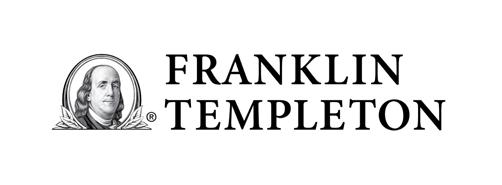
FRANKLIN TEMPLETON
Contact: Bobby Eng
Head of Institutional ETFs Canada
Address: 200 King Street West, Suite 1400 Toronto, ON M5H 3T4
PH: 416-957-6000
Email: bobby.eng@franklintempleton.ca Web: franklintempleton.ca
Ownership structure: Principals, 36%; Publicly held, 64%
Number of investment professionals: 20
Established: 1940
Management style: Active, strategic beta, traditional index
New products planned in 2024: Franklin Canadian Low Volatility High Dividend Index ETF (FLVC); Franklin US Low Volatility High Dividend Index ETF (FLVU); Franklin International Low Volatility High Dividend Index ETF (FLVI); Franklin Canadian Government Bond Fund – ETF Series (FGOV); Franklin Conservative Income ETF Portfolio – ETF Series; Franklin Core ETF Portfolio – ETF Series; Franklin Growth ETF Portfolio – ETF Series; Franklin All-Equity ETF Portfolio – ETF Series
Benchmarks tracked: FTSE Canada All Cap Domestic Index, S&P/TSX Composite Index, FTSE US Index, Russell 1000® Index, Russell 3000 Index, FTSE Japan Index, Solactive GBS Developed Markets ex North America Large & Mid Cap CAD Index, Solactive GBS Emerging Markets Large & Mid Cap CAD Index, MSCI World Index-NR, Russell 1000 Growth Index, MSCI EAFE Index, MSCI ACWI ex-REITs Index, MSCI EAFE IMI Index, S&P 500 Total Return Index, FTSE Canada 0-1 Year Universe Overall Bond Index, FTSE Canada Short Term Overall Bond Index, FTSE Canada Universe Bond Index, Bloomberg Barclays Global Aggregate (100% Hedged into CAD) Index, Bloomberg US Aggregate Index (Hedged to CAD), FTSE Canada All Corporate Bond Index, FTSE Canada All Government Bond Index, S&P Global Infrastructure Index
Transparency rules: Passive, Smart Beta, non-feeder active, fully transparent; Feeder of mutual fund ETFs, non-transparent Management fees: Management fees vary by ETF


Contact: Emerson Baker, CFA
VP, Institutional Sales and National Accounts Address: 55 University Ave., Suite 800, Toronto, ON M5E 1S2
PH: 416-777-9524
Email: ebaker@globalx.ca Web: globalx.ca
Number of investment professionals: 75 Established: 2013
Management style: Active, traditional index Fund assets: Canadian Equities, $6,950,624,235M; US Equities, $4,914,868,729M; Global Equities, $1,265,654,627M; Emerging Markets Equities, $87,763,617M; Fixed Income, $7,616,681,457M; Commodities, $702,783,787M; Multi-Asset, $423,537,458; Cash/Cash Equivalents, $8,179,938,144M; Currency, $185,057,109M; Total Assets Managed, $30,474,817,354M
Asset flows: Inflows, $9,296,158,026M; Outflows, $13,046,141,877M
New products planned in 2024: Global X S&P 500 Index ETF; Global X S&P/TSX 60 Index ETF; Global X NASDAQ 100 Index ETF; Global X MSCI EAFE Index ETF; Global X MSCI Emerging Markets Index ETF; Global X Artificial Intelligence & Technology Index ETF; Global X Bluechip Innovation Tech Top 10 Index ETF; Global X India Nifty 50 Index ETF; Global X MSCI EAFE Covered Call ETF; Global X MSCI Emerging Markets Covered Call ETF; Global
X Short-Term Government Bond Premium Yield ETF; Global X All-Equity Asset Allocation Covered Call ETF
Products launched in 2023: Horizons Equal Weight Banks Index ETF; Horizons 0-3 Month T-Bill ETF; Horizons 0-3 Month US T-Bill ETF; Horizons Short-Term US Treasury Premium Yield ETF; Horizons Mid-Term US Treasury Premium Yield ETF; Horizons Long-Term US Treasury Premium Yield ETF; Horizons Growth Asset Allocation ETF; Horizons Growth Asset Allocation Covered Call ETF; Horizons Enhanced All-Equity Asset Allocation Covered Call ETF; Horizons Enhanced Equal Weight Banks Index ETF; Horizons Enhanced Equal Weight Canadian Banks Covered Call ETF; Horizons Enhanced S&P/TSX 60 Index ETF Benchmarks tracked: S&P/TSX 60 Index; S&P 500 Index; MSCI Emerging Markets Index; MSCI EAFE Index; NASDAQ-100 Index
Transparency rules: Fully transparent
Management fees: Average management fees, 0.43%; Average MER, 0.48% basis points

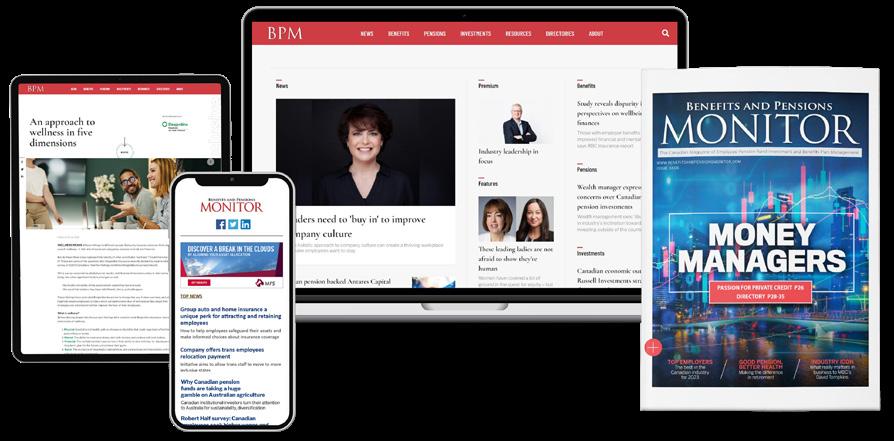
the best way
Jillian Kennedy of Mercer says philosophy of target date funds has had a reset
(TDFs) have seen more substantial changes in the past four years than in the past two decades since their introduction in the early 2000s. Significant market upheaval, impending regulatory changes, and new ideas about how and when to retire are making TDF managers take a closer look as to how these funds can benefit Canadian employees/investors on their path to and through retirement.
“There’s a whole reset of the philosophy,” says Jillian Kennedy, partner, wealth with Mercer. She says target date managers are revisiting objectives and how they approach retirement readiness.
“There are a lot of philosophies that are starting to change as we see market changes. Glide paths are changing and now we have to look at how much risk is appropriate. Our money has to work harder, and, when plan members do start to derisk, what is the best way to derisk? We’re seeing people hold on to equities longer, and we’re seeing different approaches as to when the derisking might occur.”
The ‘to’ vs. ‘through’ retirement concept
Kennedy, who leads the strategy for DC savings and financials for Canada at Mercer, says a primary reason driving much of this change is the “to” versus “through” retirement concept. Some plan members will stop changing allocations once retirement is reached (to retirement glidepaths), while other continue to change allocations past the point of retirement
(through retirement glidepaths).
“As little as five years ago, most organizations would add a TDF for the purpose of helping people save when they get to retirement. Now, we’re seeing a shift – and we’re waiting for regulatory guidance that will cement this shift – where managers have to think about this whole concept of transitioning into retirement.”
Typically, the glide path is the strategy that dictates asset allocation changes as investors
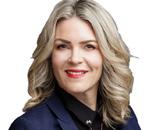
classes being used. “The overall asset classes are playing a more important part now. We are starting to see more tactical engagement with target date managers where they want to optimize risk and return.”
Tactical investing responds to market conditions. It looks at the present and the near future. A tactical investor attempts to shift the composition of a portfolio to manage risk exposure or to take advantage of new opportunities.
“We’re seeing people hold on to equities longer, and we’re seeing different approaches as to when the derisking might occur”
Jillian Kennedy, Mercer
move closer to retirement. Traditionally, these paths have become more conservative as the retirement date approaches. Kennedy suggests that glide paths should continue throughout retirement and not stop when someone is ready to turn their savings into retirement income.
People have become more accepting of risk in their portfolios, “and we think that may be what’s driving the change,” she says. “People have a lot more going on as they transition to retirement, so our first strategy is to help people to not worry about how they’re invested.”
Another change in TDFs is the level of asset
TDFs have typically invested in equities with investment in bonds to “give the right amount of risk and the right amount of time.”
Kennedy says the TDF market has also seen the introduction of alternatives and that now “the newest asset class on the block is the introduction of private equity.” And, while the alternative asset class is a small component of the TDF portfolio, “you can see why an investment manager would need to have better diversification across different sources if they’re taking that equity risk and their risk premium goes up.
“Similarly, we historically used to cash in universe bonds to derisk, but that’s not going to

give us the duration that we want to match up to the liability. Managers are getting smarter and starting to look at alternatives as a class like they would do in an asset mix study for a defined benefit pension plan.
“They are getting really creative on the instruments they’re using to derisk, including things like emerging market debt or alternative sources of private debt that actually allows the diversification on the derisking side as well. They will have to manage their cash flow and rebalancing better because they still have liquidity to worry about.”
Kennedy says all these changes are happening together and, in some ways, go hand in hand and affect the glide path, because with private equity, investors want longer holding periods. She admits there are many more changes to come in this space, but, in the meantime, “we can rely on investment strategies and leverage tools that are already working in the retail markets. That might actually be where we need to focus our attention.”
Another significant development is the
“Managers are getting smarter and starting to look at alternatives as a class like they would do in an asset mix study for a defined benefit pension plan”
Jillian Kennedy, Mercer
increasing integration of environmental, social, and governance (ESG) factors into TDFs.
“We see the majority of target date managers now have some ESG integration. Roughly 80–90 percent of TDFs have integrated ESG somehow, but some are doing it differently than others. How ESG is implemented will tie back to what the organization’s ESG beliefs are and how they want to manage that risk. Everyone will be a little bit different, and this is causing us to see a lot of new product coming into the market. There are differing flavours of investment style (i.e., passive vs. active), and organizations are asking for a mix instead of having to choose between styles.”
When it comes to adding ESG products,
Kennedy says managers have to care about how products are designed and look at it through a fiduciary lens. “You have to care about fees and past performance like financial outcomes. You also have to care about how those portfolios are being managed.”
As the TDF industry adapts to new realities, Kennedy’s insights suggest that both challenges and opportunities lie ahead. The ongoing adjustments in investment strategies, coupled with a proactive response to impending regulatory changes and an increased focus on ESG, are setting the stage for a new era in retirement planning – one that promises greater flexibility and responsiveness to the needs of tomorrow’s retirees.
As the shift away from defined benefit plans continues, strategy simplifies the process for those without investment expertise or experience
TARGET DATE FUNDS (TDFs) are an important component of capital accumulation plans (CAPs) for employees who lack investment expertise. As TDFs become more dominant in the market, they continue to evolve and grow, offering the opportunity for better outcomes for plan members.
Jafer Naqvi, vice president and director, lead of institutional asset allocation team at TD Asset Management, says there is a continued shift from defined benefit (DB) plans to defined contribution (DC) plans. As employers move away from guaranteed pension plans, the onus of retirement savings increasingly falls on employees. Most employees do not have investment expertise, so this necessitates simplified investment solutions, such as TDFs, which automatically adjust the investment mix over time based on the employee’s age and proximity to retirement.
TDFs were introduced into the Canadian market in the early 2000s. TDFs are structured to maximize the investor’s returns by a specific date. Generally, funds are designed to build gains in the early years by focusing on riskier growth stocks; then they aim to retain those gains by weighting toward safer, more conservative choices as the target date approaches.
No more guarantees
“TDFs are important because of what’s
going on in Canada and around the world,” says Naqvi. “We’re seeing less DB plans where the pension is guaranteed by the employer and more DC plans where an employer provides a plan where it offers a matching contribution up to a certain amount without any guarantees.
“That money goes into an investment pool and grows as the employee’s retire -

to their savings horizon.”
In simple terms, when investors are young, they have a longer time horizon, and they will potentially have a lot of contributions over that time. They can afford to take more risk, and then, as they approach retirement, they’ve built up their nest egg. As the fund grows over time and the investor moves closer to retirement age, the
“Plan members invested in TDFs tend to end up with better outcomes than those who are left to their own devices”
Jafer Naqvi, TDAM
ment nest egg.” However, Naqvi says, “whatever that pool of money amounts to when the employee retires, that’s their retirement income.”
Unfortunately, data shows individuals need help with retirement savings. “If you give them a bunch of investment options, most people aren’t investment experts to the point where they can create an optimal retirement savings portfolio for themselves.
“TDFs aim to simplify the retirement saving for members down to one easy question: [At] what age do you expect to retire? From the answer, TDFs will create an investment portfolio over time that adapts
TDF allocation settings will change along a glide path to a more conservative mix.
“TDFs try to reduce the risk of the portfolio so that the capital is preserved to some degree,” says Naqvi. “Studies show that plan members invested in TDFs tend to end up with better outcomes than those who are left to their own devices to try to navigate the ups and downs of the stock market.”
He adds that TDFs also benefit the employer. “One of the challenges with DC plans is getting members engaged in making their investment selections. So, if members aren’t engaged, the plan sponsor can default them into an appropriate TDF
based on their age. TDFs have improved outcomes and make life simpler. For these reasons, they are getting a lot of traction, and now they tend to be large portions of DC programs.”
A broader range of investment options
Naqvi says TDFs have evolved over time to include a broader range of investment options. For example, along with stocks and bonds, many now include alternative investments (e.g., infrastructure, private real estate). These alternatives provide inflation protection and potential for higher returns.
“Traditionally, TDFs have been in the realm of investing in stocks and bonds. Stocks are the riskier investments but can provide more returns. Bonds are what stabilize the portfolio and derisk it over time.
“If we look at DB plans, for quite some time the largest institutional investors with DB plans have opened their degrees of freedom beyond just stocks and bonds to include alternative investments. Particularly in Canada, private real assets have played a big role in DB plans.
“Alternative investments, such as infrastructure, private infrastructure, private real estate, and different private credit strategies, give investors many characteristics that are a great complement to their asset mix and can enhance the portfolio when included alongside stocks and bonds.”
Alternative investments can offer inflation protection, which has been particularly demonstrated over the last few years.
“Portfolios that didn’t have good inflation protection really struggled,” says Naqvi. “In 2022, stocks and bonds both decreased by more than 10 percent. They didn’t have that traditional diversification where if one goes up, the other goes down and smooths the ride out. In 2022, everything went up and down at the same time, which can be quite difficult for investors, as we saw.”
Alternative investments are a good option

“DC plans can integrate alternative investments with TDFs that have integrated them”
Jafer Naqvi, TDAM
because of their inflation hedging characteristics. They did quite well in 2022 by providing additional diversification to stocks and bonds.
DC plan sponsors were looking for a way to integrate alternative investments into their plans, and TDFs provide a good way to do this.
“For DC plan members, complexity is not a good thing. TDFs are simple for the member because they offer professional money management that can integrate some of these more complex levers. TDFs have managers who provide proper due diligence and who can transmit the value, navigate the liquidity, navigate some of the operational
complexities with coming in and out of these strategies, and can integrate them into a holistic TDF alongside the stocks and bonds.
DC plans can integrate alternative investments with TDFs that have integrated them.
“These investments have shown an ability to deliver attractive returns often above the average TDF. But, just as important, they are able to do that with a lot less risk while smoothing out the ride.”
Simplifying investment choices reduces the psychological burden on plan members who might otherwise be overwhelmed by the complexities of investment decision-making. As TDFs evolve, they offer smoother investment returns over time, contributing to better long-term financial outcomes.
What is quantum computing, how does it work – and could it be poised to revolutionize plan members’ retirement?

QUANTUM COMPUTING is an emerging technology with the potential to profoundly affect all industries, including pensions.
In describing quantum computers, it helps to contrast them with current or “classical” computers, which use tiny transistors to generate informational bits with the value of zero or one. To execute a computer program, transistors are continually switched on and off according to logic that encodes the problem being solved. The development of classical computer technology since the middle of the last century has relied on making the transistors smaller and the switching faster. Although progress has proceeded exponentially, leading to the modern information age, the growth is slowing due to hard physical limits on the size and switching speed of transistors.
Quantum computers, by contrast, use the
principle of quantum superposition, which has no classical analogue. A quantum bit, called a qubit, isn’t constrained by needing to be either off or on. Until we measure it, we need to treat it as if it were in both states simultaneously. Many popularisations of quantum mechanics describe this using Schrodinger’s famous analogy of a cat in a box which may or may not have been poisoned. Until we open the box and confirm the cat’s fate, it is in a combined state of being both alive and dead. In addition, multiple qubits can be “entangled,” meaning that they are intrinsically correlated with one another. The use of superposition and entanglement allows for qualitatively different algorithms that have no analogue in classical computers and that can, in some cases, be dramatically faster. We discuss examples relevant for pensions later on.
There are many ways to create a quantum computer – such as trapped ions, neutral atoms, superconductors, quantum dots, and other novel physical systems. However, it is still very difficult to create a large-scale machine. The current record, set in October of 2023, is only 1,180 qubits, compared to the billions of bits in a typical classical computer. In addition, the superposition of the quantum state is exceedingly fragile, and maintaining the state long enough to perform a useful calculation is a challenge. There has been rapid progress on addressing these engineering issues. In the rest of this article, we shall assume that these developments will continue and allow for practical applications for financial institutions such as pensions.
Cryptography is of central importance to our highly networked world. This is certainly true for pensions where use of cryptography means that members are assured that their personal information is kept private. In addition, portfolio managers must communicate securely with service providers, among dozens of applications. Quantum computers have the potential to break modern encryption.
All encryption algorithms rely on the concept of what is called a trapdoor function. This is an operation that is very easy to perform in one direction, but is effectively impossible to undo. One common example is the multiplication of prime numbers. A prime number is a number that cannot be written as the product of smaller numbers: 61 and 53 are prime numbers. In contrast, a composite number is a product of primes: for example, 3,233 is a composite number,
since it equals 61 times 53. The trapdoor is to determine the two prime numbers if all you know is their product. Even in our simple example, most people would find multiplying 61 times 53 to be much simpler than finding the unique factors of 3,233. The difference in difficulty is exponentially greater if the two prime numbers are sufficiently large. Modern cryptography uses numbers that are over 600 digits long, so that even the fastest computer in the world would require billions of years to factor them. This means that you can broadcast the product while remaining confident that no one can infer the two underlying primes, which effectively remain secret.
Quantum computers could crack this problem. One early result in quantum computing was the Shor algorithm, which shows that factoring is tractable for a quantum computer. And recently, another researcher published a refinement that could be up to 1,000 times faster still. This has the potential to upend cryptography. Even though no one is yet close to having a quantum computer that can effectively implement the Shor algorithm, there is the concern that bad actors could archive encrypted data today in the hopes of being able to crack it later, once quantum computers are available. This concern goes by the handle “harvest now, decrypt later,” and has injected urgency into research on so-called post-quantum cryptography – the search for cryptographic algorithms that are equally difficult for classical and quantum computers.
Optimization is another important application. In some instances, dramatic speedups have been reported on optimization problems. D-Wave Systems, based in Burnaby, BC, has developed quantum machines that are specific to that application. A third application is to Monte Carlo simulation, an algorithm that uses large numbers of random synthetic scenarios for the system being modelled and then averages the result. Unfortunately, the approach is very slow: to
double the accuracy, you need four times the number of scenarios. Quantum computers are different: to double the accuracy you only need double the number of scenarios. Many financial applications require hundreds of millions of scenarios, and quantum computers could provide the same accuracy with orders of magnitude fewer scenarios.
Improvements in decision-making include applications to risk management and finance. Risk management relies heavily on quantitative techniques like Monte Carlo to support functions such as market risk measurement, counterparty credit risk processes, and actuarial analyses, among others. The use of quantum computers
Potential applications for saving money include better automation around due diligence, back-office functions like accounting and trade confirmations, audit functions and anomaly detection
More specific to pensions, quantum computers can help to:
• make money
• save money
• improve the decision-making process
In terms of making money, potential applications include portfolio optimisation, better market forecasting, improved macroeconomic forecasting, and enhanced algorithmic trading. Due to physical constraints on existing quantum computers, optimisation algorithms have so far only been used on unrealistically small portfolios. Nonetheless, they are important proofs-of-concept that show that when the hardware is further developed, the process of portfolio optimisation is primed for disruption.
Potential applications for saving money include better automation around due diligence, back-office functions like accounting and trade confirmations, audit functions, and anomaly detection. Enhanced Monte Carlo could also benefit functions such as derivative valuations.
could either speed up existing processes or enhance accuracy or scope. As with machine learning, there may well be applications that are not even currently envisaged. And indeed, marrying the concepts of artificial intelligence and quantum computing is an active area of research.
To close, we remark that there are investment opportunities in the field of quantum computing due to the many start-ups in need of capital. As one example, Photonics, based in Vancouver, has raised over $140 million in funding and has recently partnered with Microsoft to scale up its technology. According to Capgemini, annual investments have grown by a factor of 10 in just the last five years. This space is increasingly attractive for venture capital firms, given the greenfield nature of the industry, the potential for large upside gains, and the diversification provided.
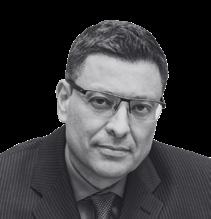
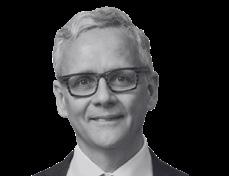
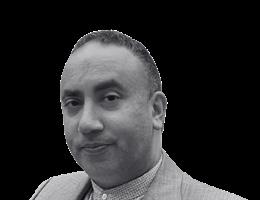
‘I love what the Calgary Stampede does. It gives back to the community, creates many jobs, and brings a lot of money to the city’

Vicki Blais, of Acera Insurance, is proud she can give back to a city that has given her so much
BY DAY, Vicki Blais oversees the day-to-day HR activities for industry-leading companies as senior client services specialist and HR coordinator, as well as employee owner, with Acera Insurance. But when she’s not at work, Blais pulls on her cowboy boots and hat and spends much of her free time giving back to her community.
Based in Calgary, AB, Blais began her volunteer work in 2008 with the Calgary Stampede Foundation, which donates to the region’s youth. The foundation is part of the Calgary Stampede, a not-for-profit community organization that preserves
and celebrates the city’s western heritage, cultures, and community spirit. The Calgary Stampede has held exhibitions and stampedes (rodeos) annually since 1923.
“I love what the Calgary Stampede does,” says Blais. “It gives back to the community, creates many jobs, and brings a lot of money to the city.”
Blais volunteers on three committees for the foundation. She works with the Stampede’s youth programs, which include “Stampede school,” where kids learn about the history of the west and the Stampede; Indigenous training for First Nations children; and the
Young Canadians School of Performing Arts, Stampede summer camp, poster competitions, and scholarships.
Blais also volunteers with the LaDue Ladies Lunch, which offers a scholarship program for young women, and the Special Olympics. She has been nominated for a Calgary White Hat Award, which recognizes individual achievements in the city’s tourism industry.
“I love living in Alberta and I love living in Calgary,” she says. “I like to support organizations that support individuals in our community. It gives me a chance to give back to a city that gives so much to me.”

